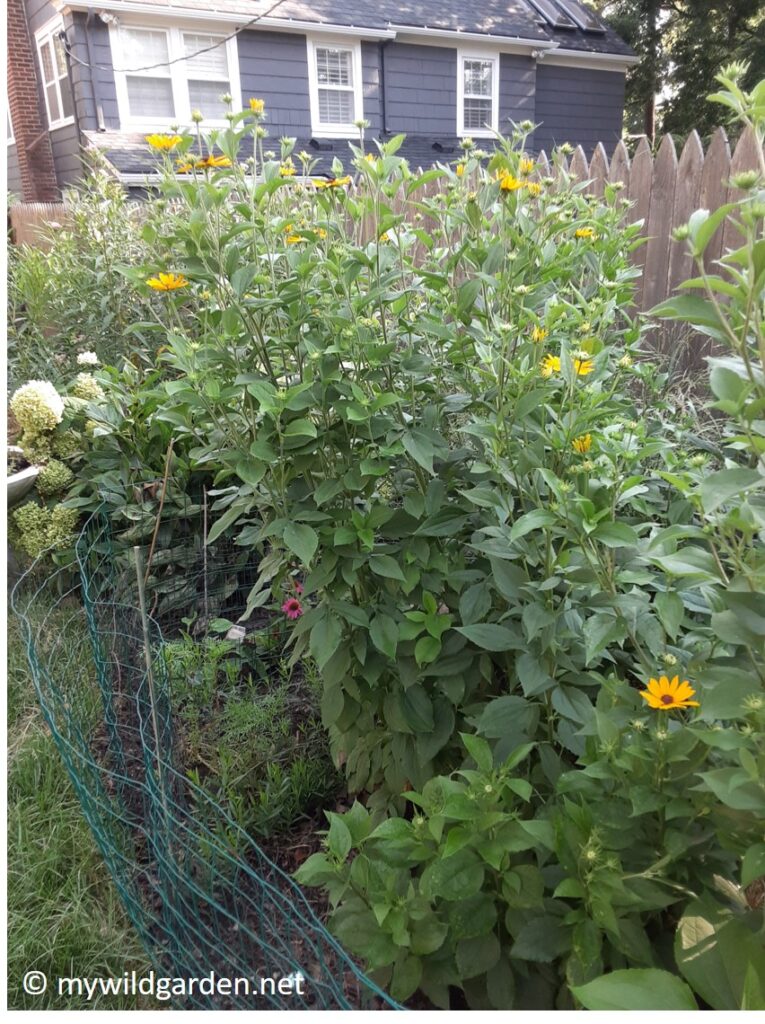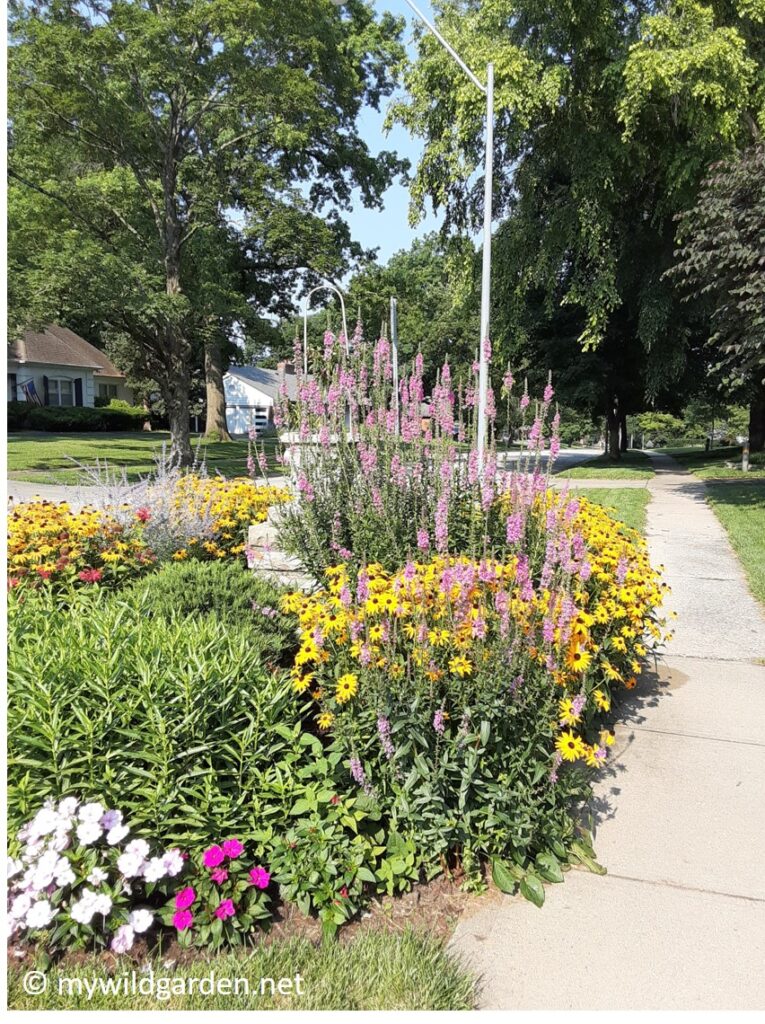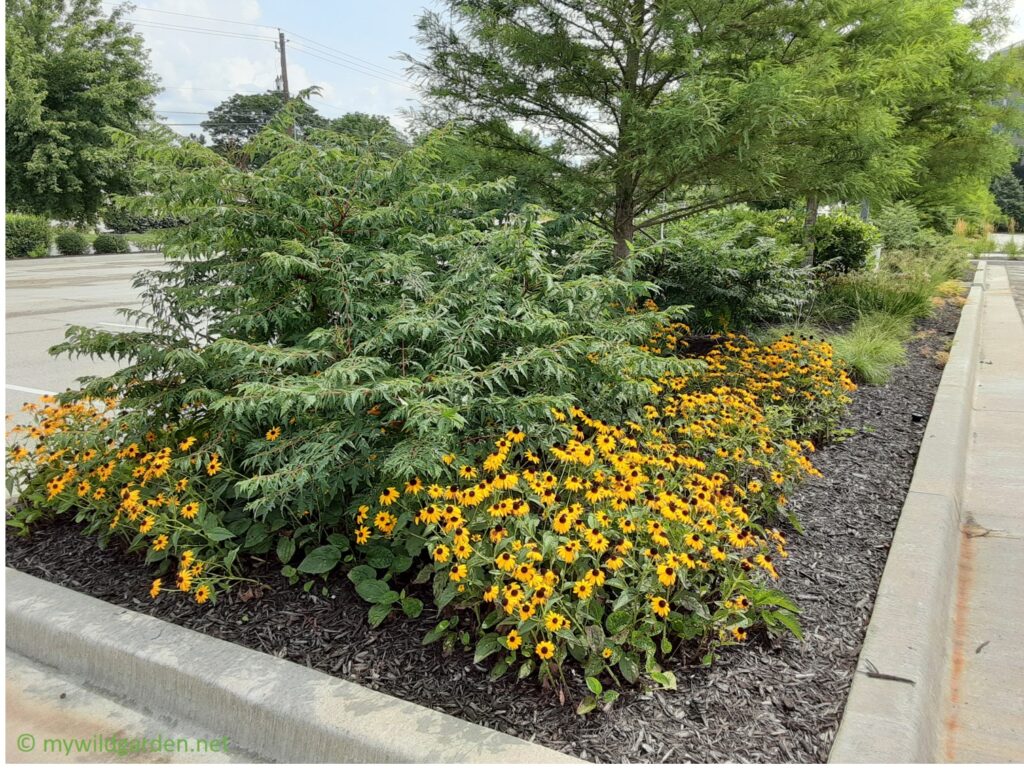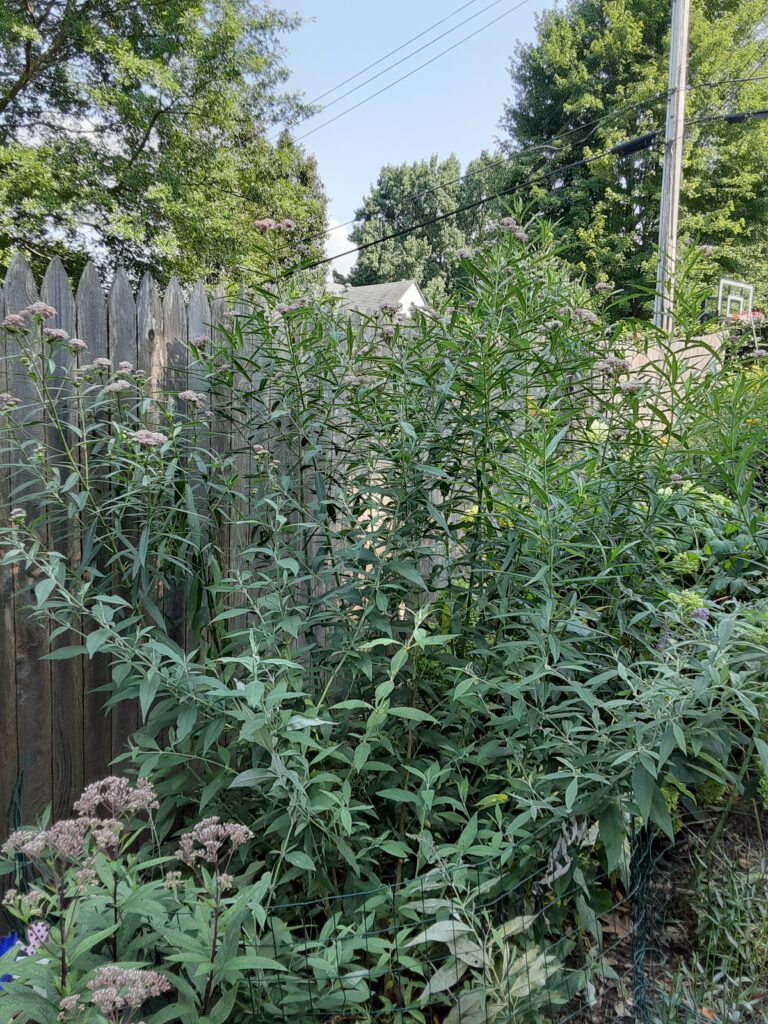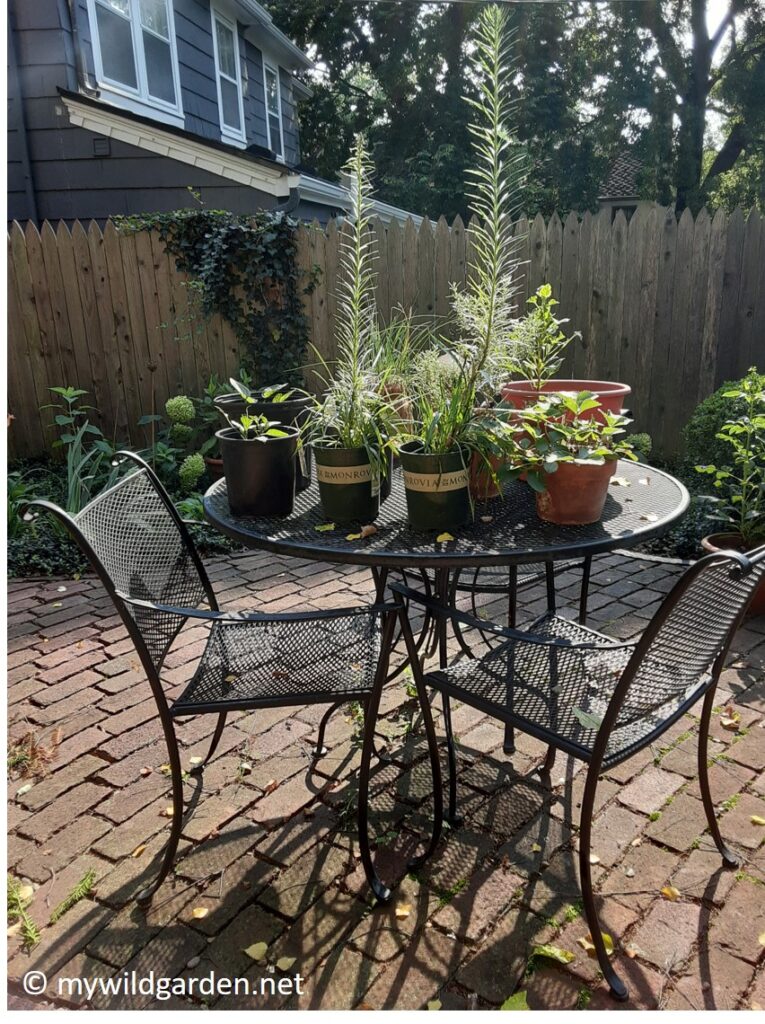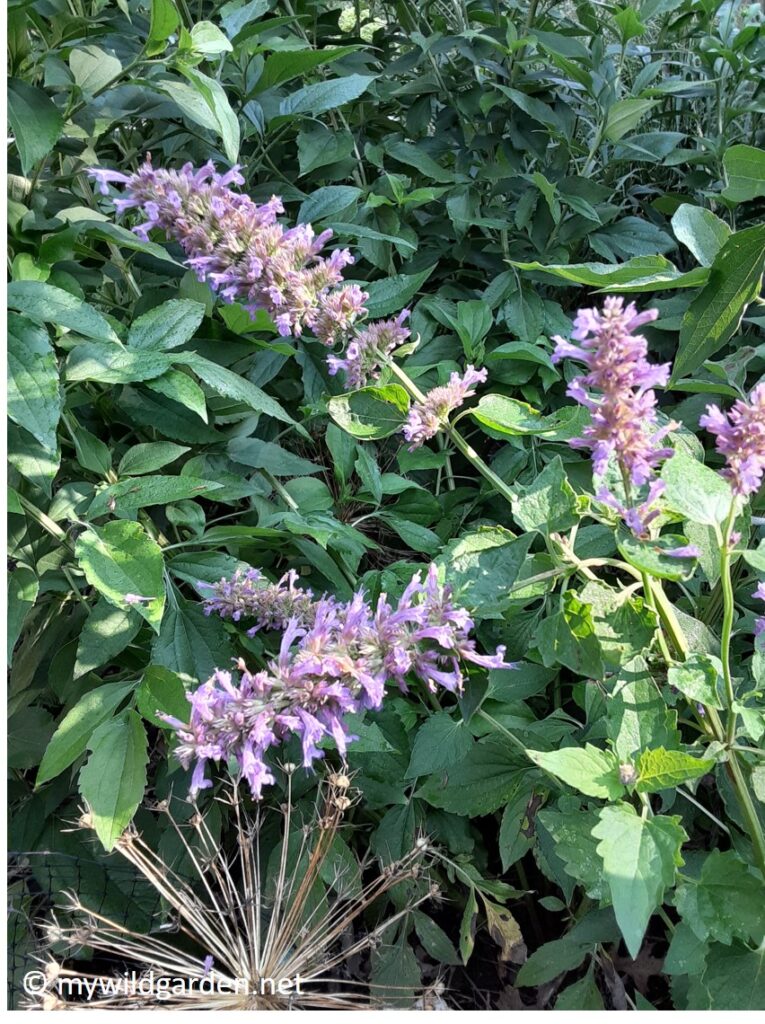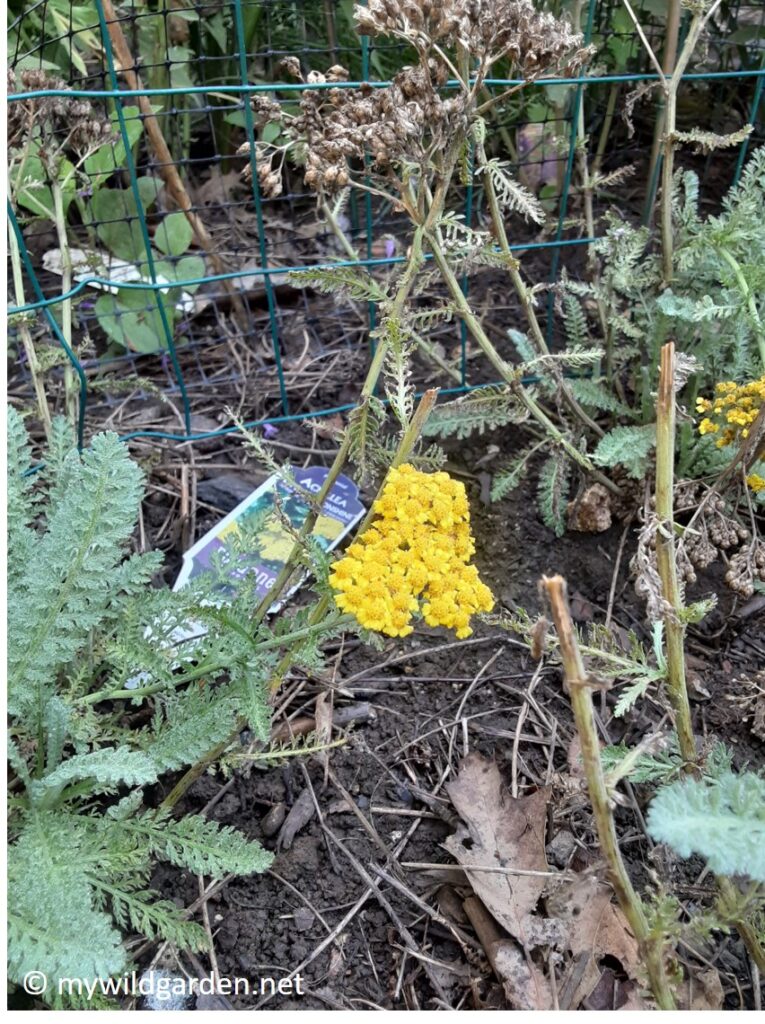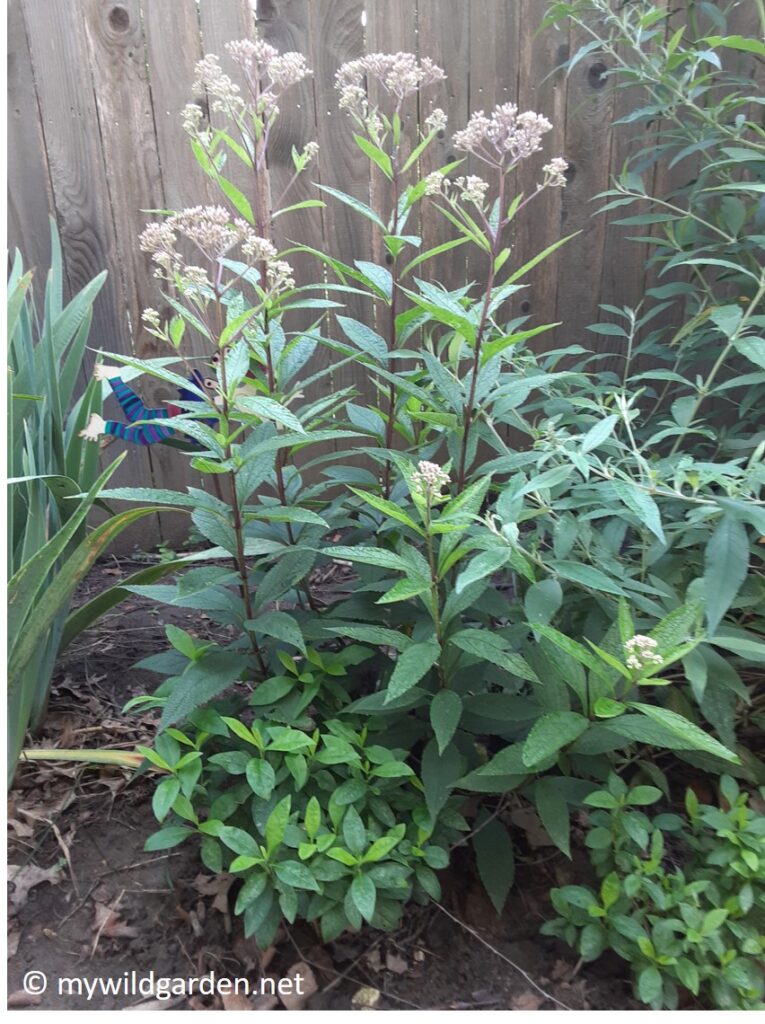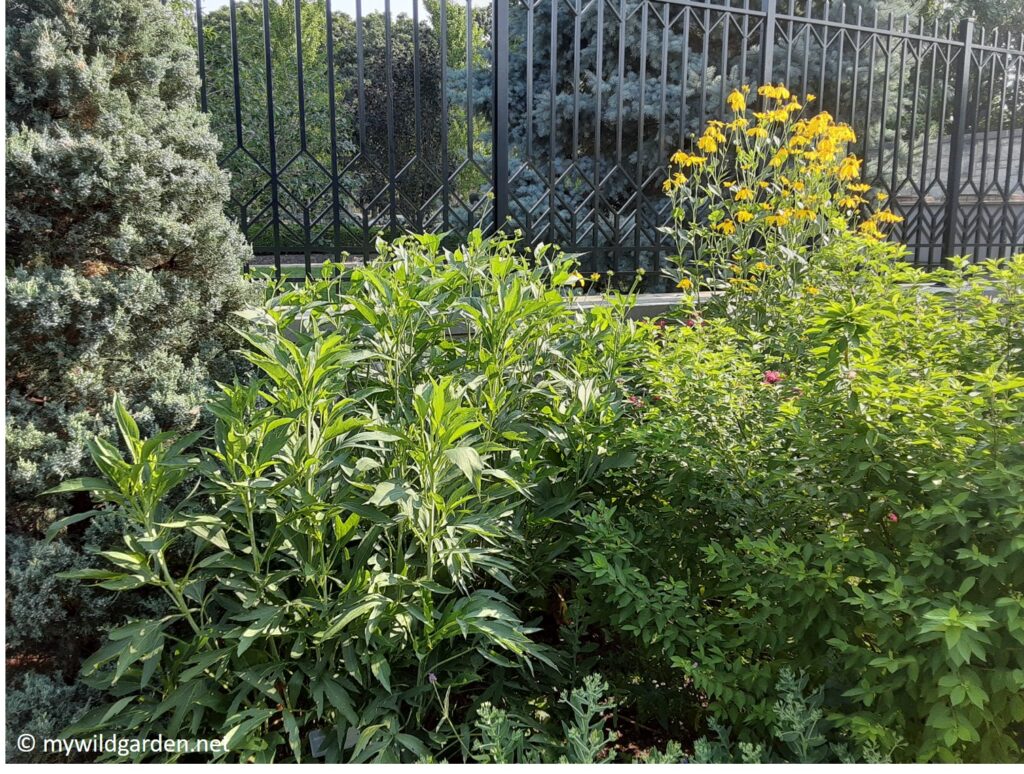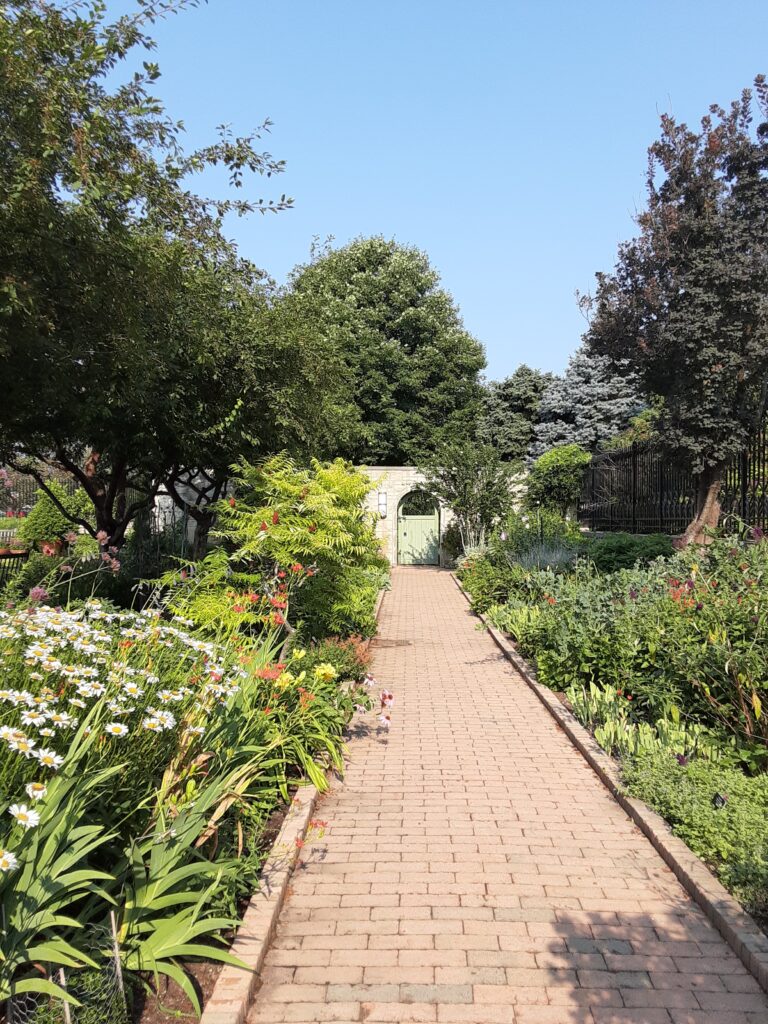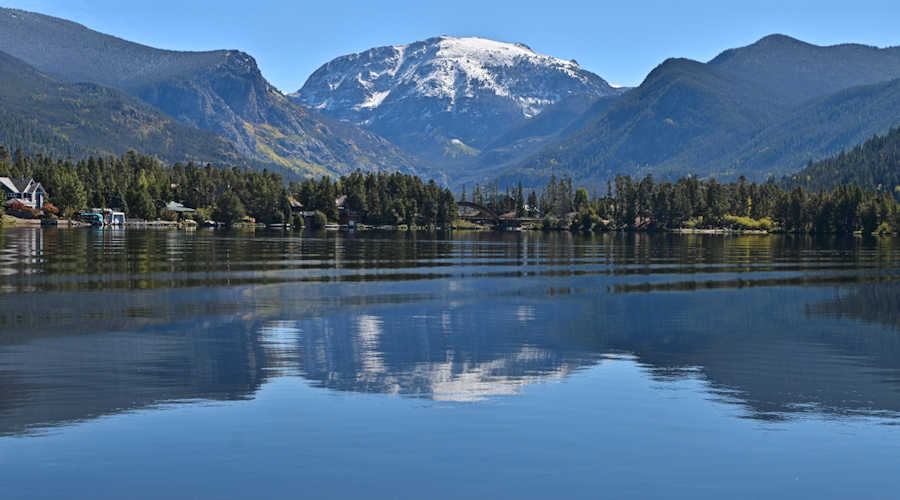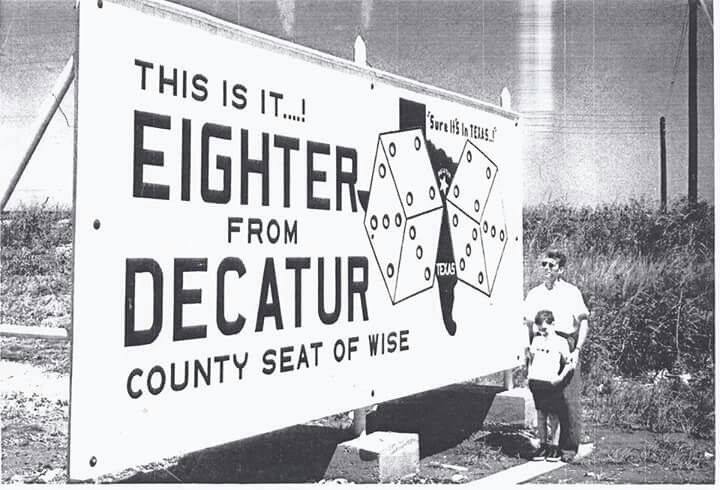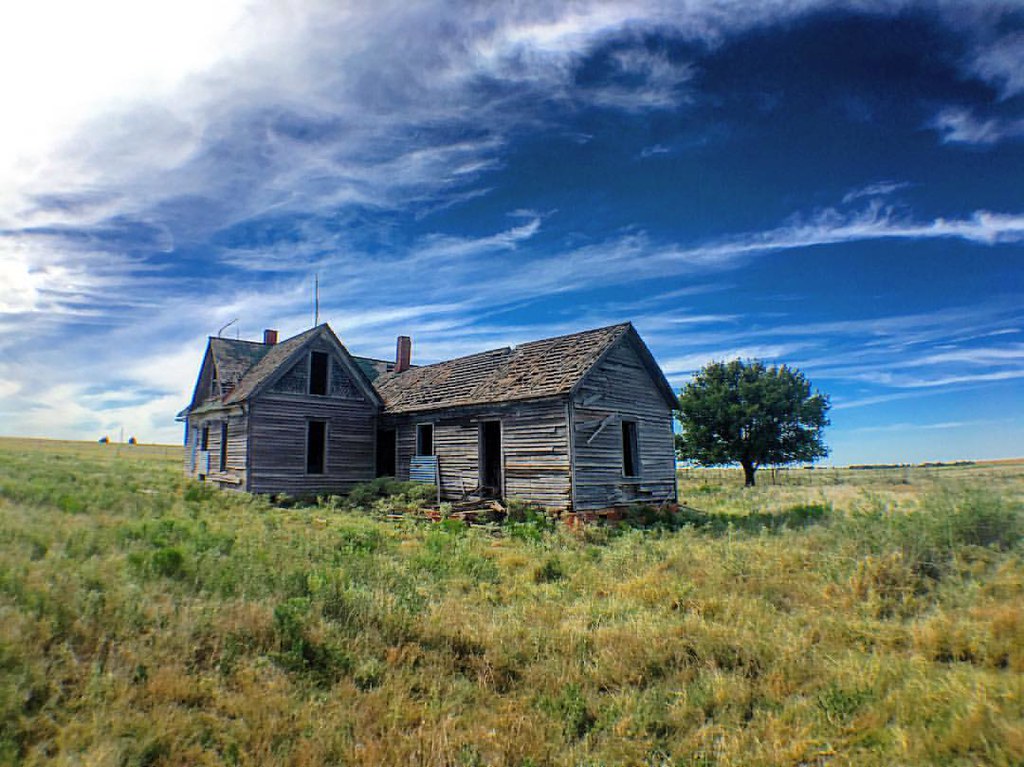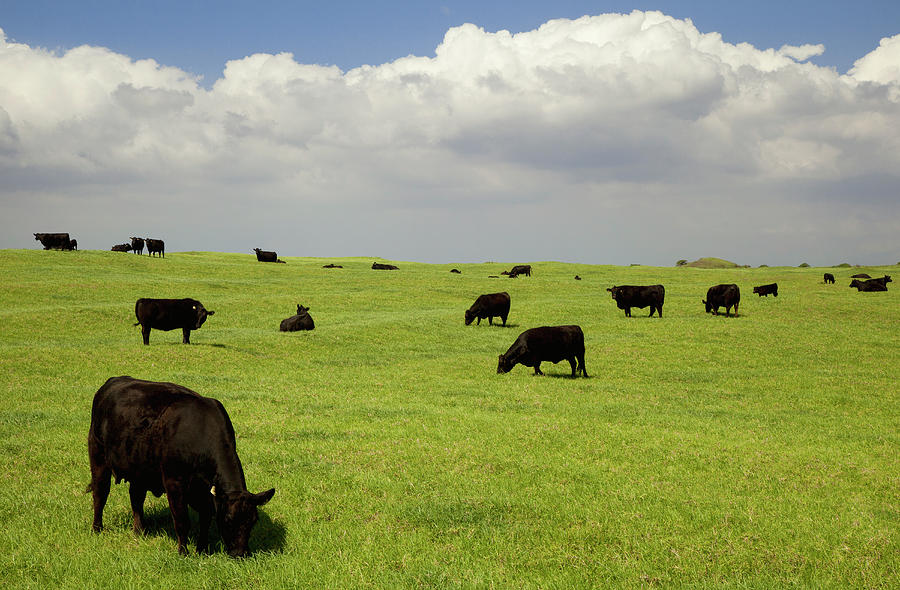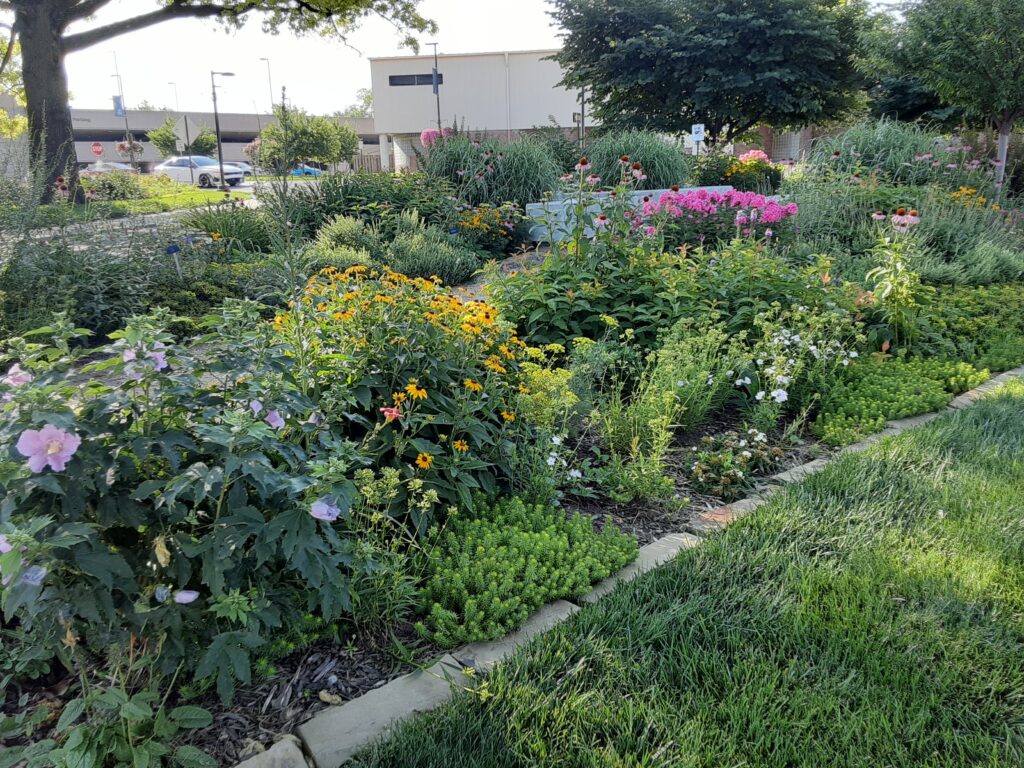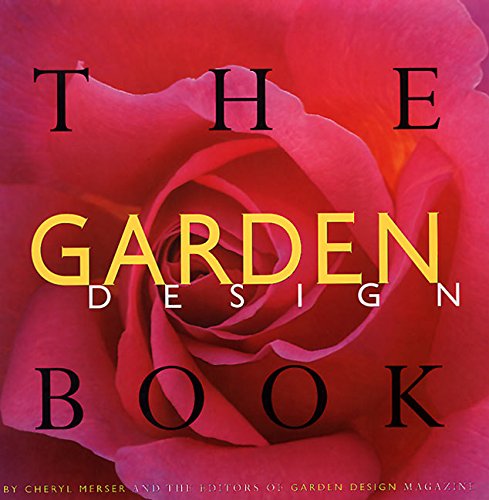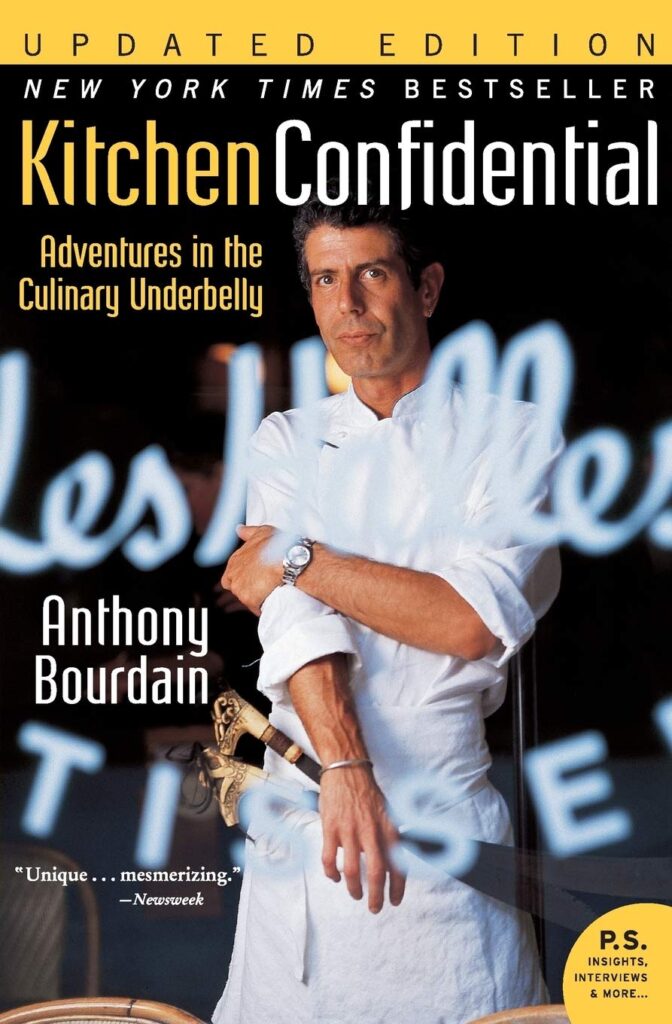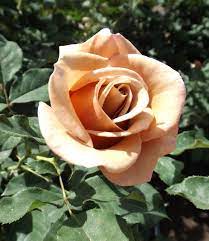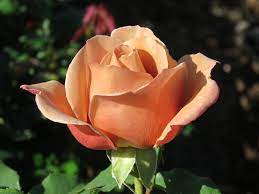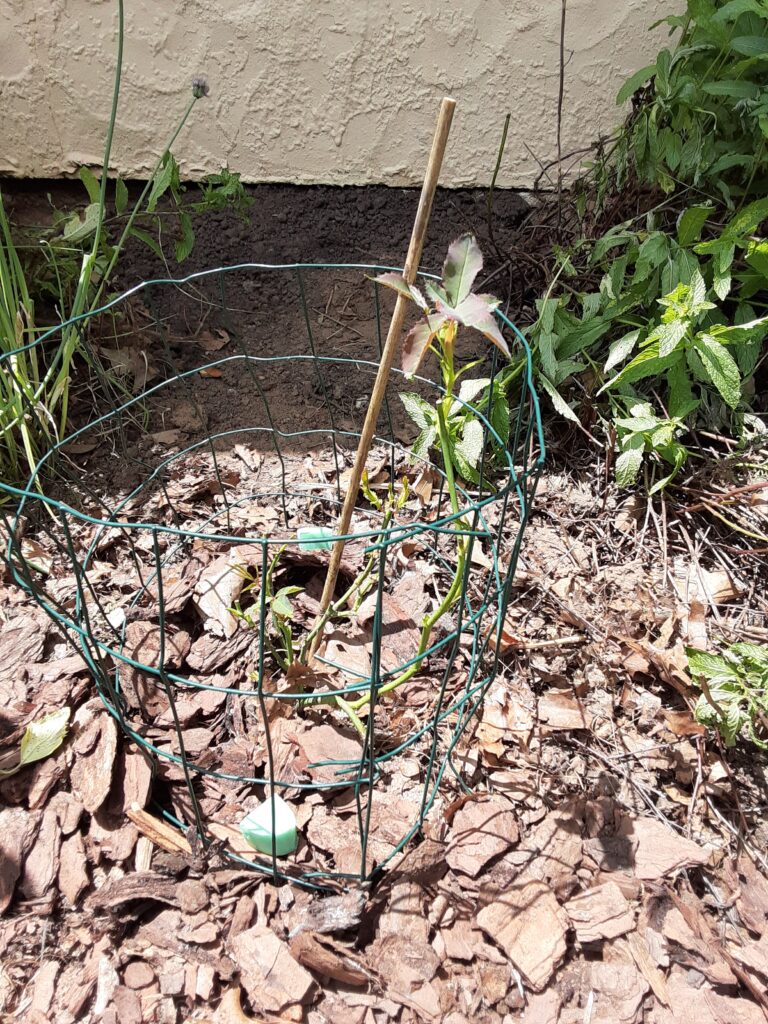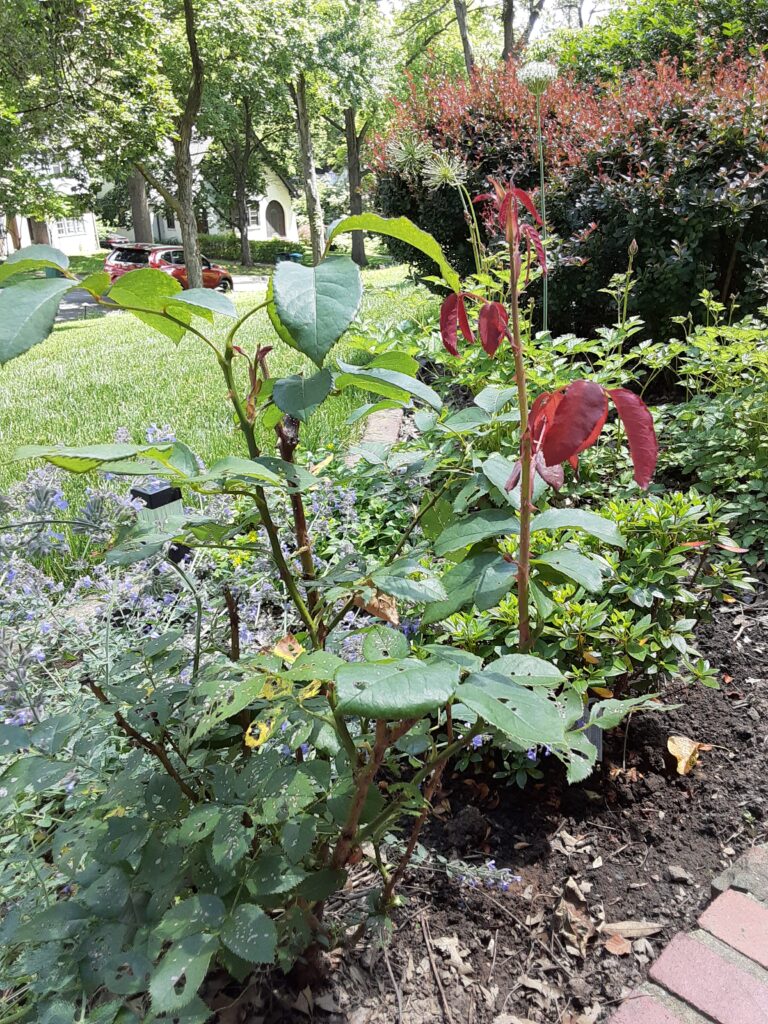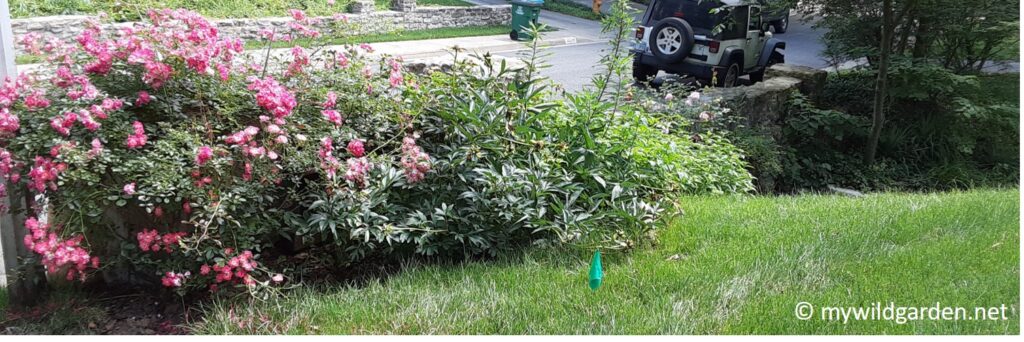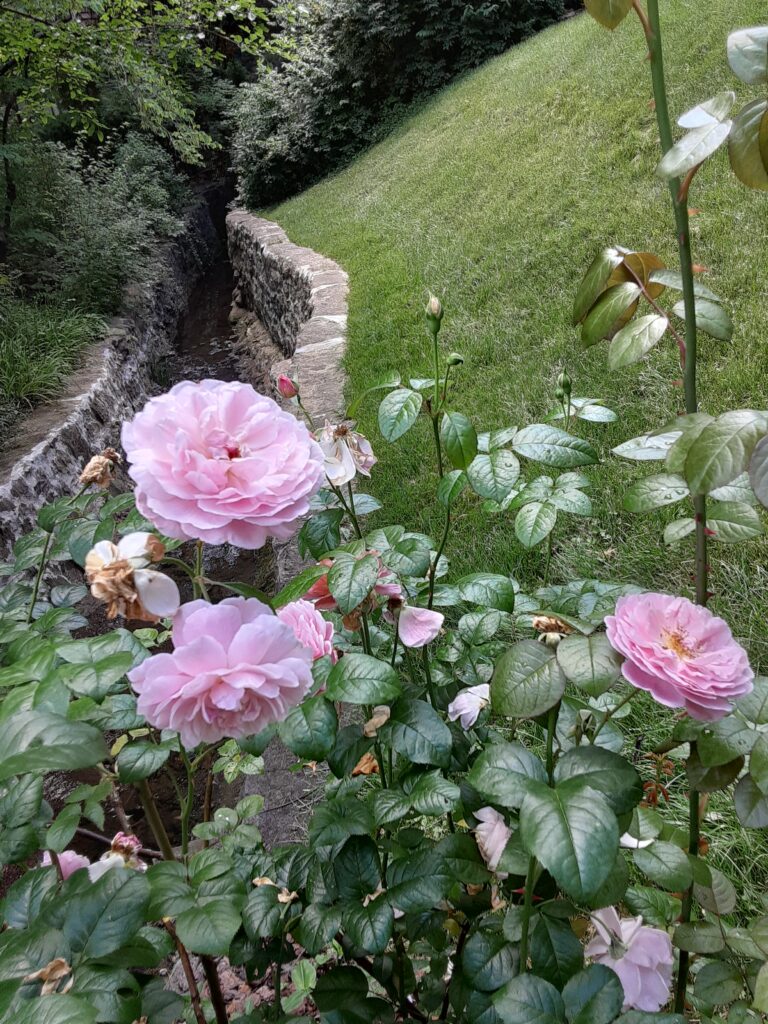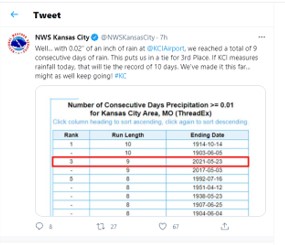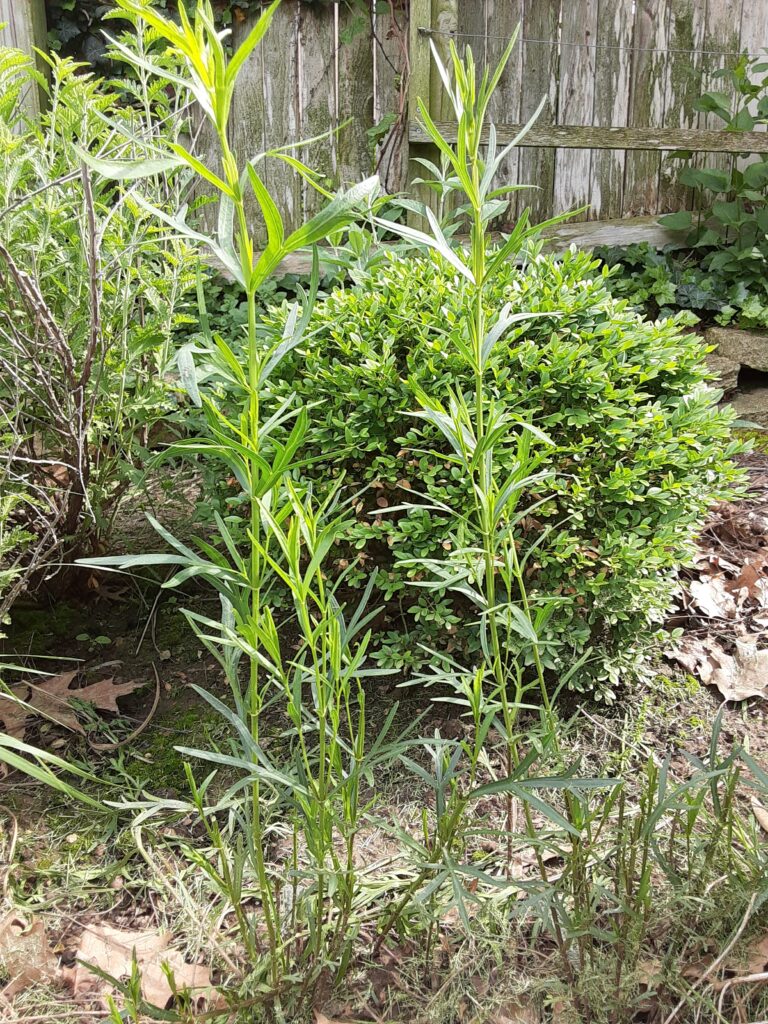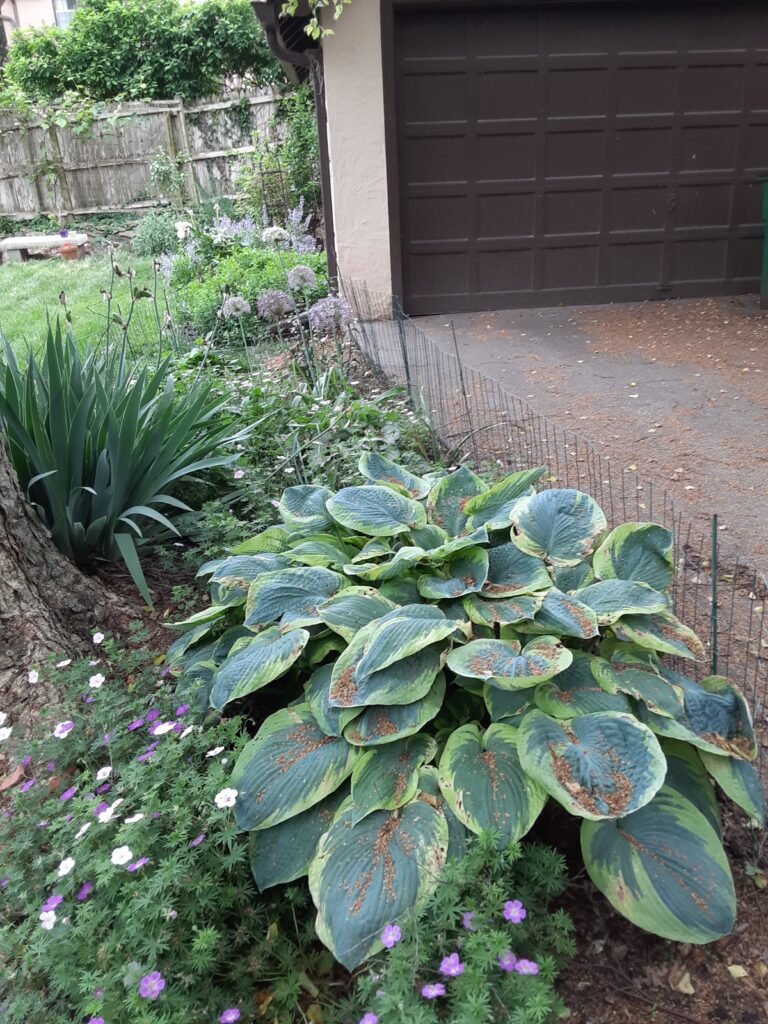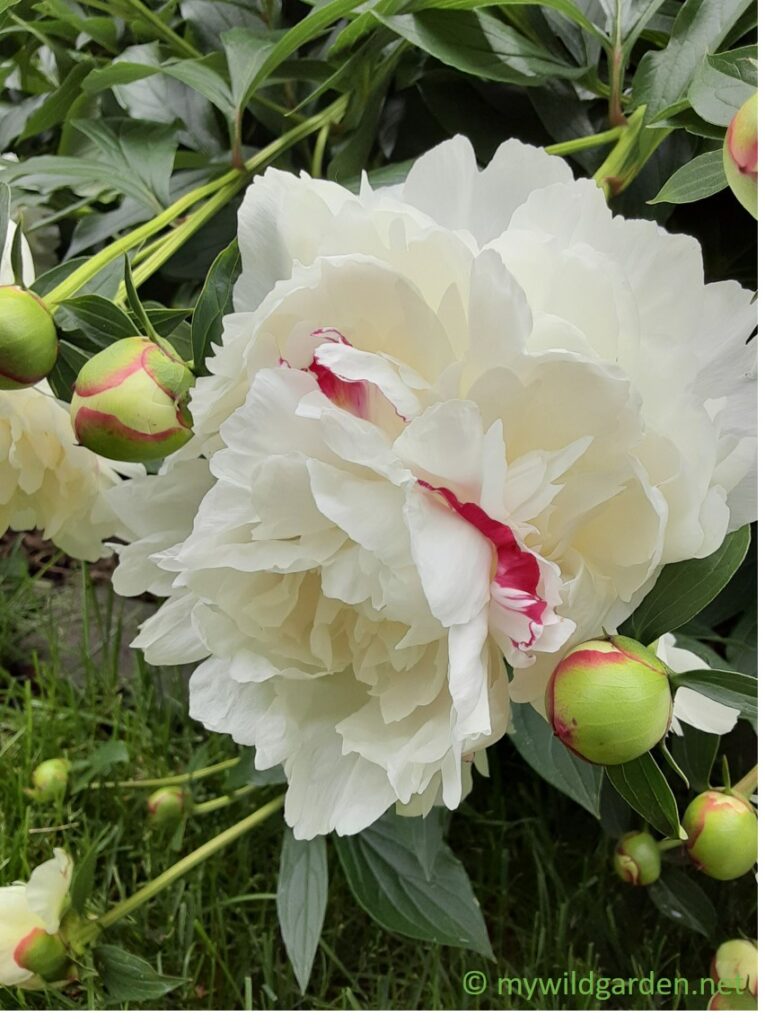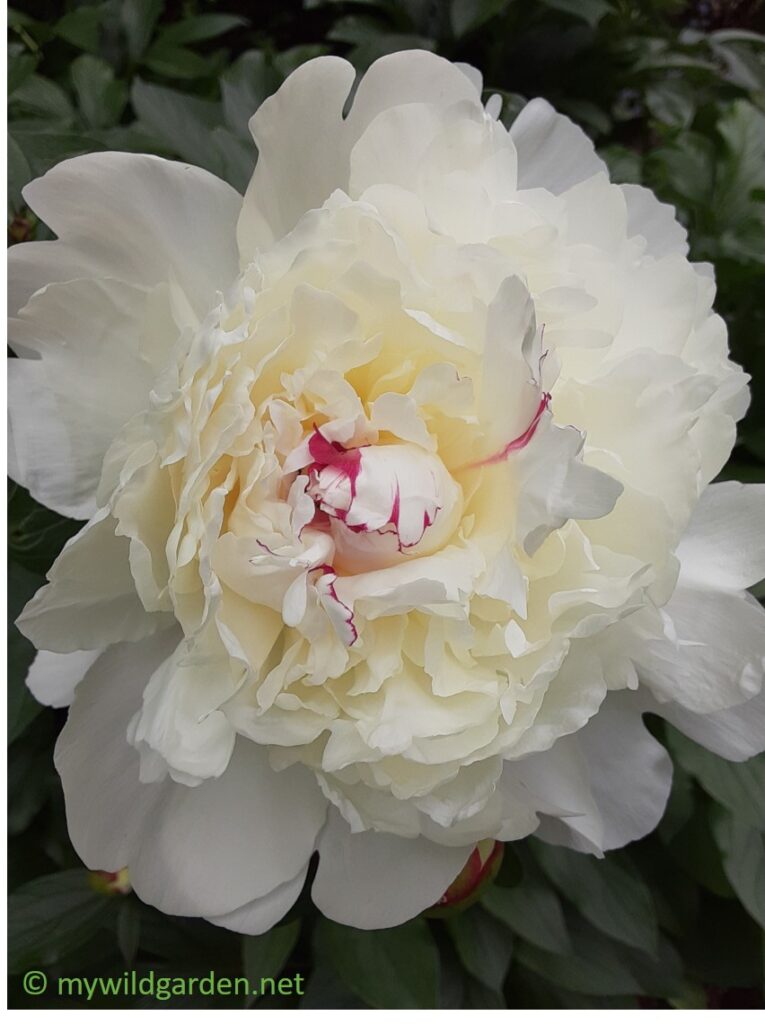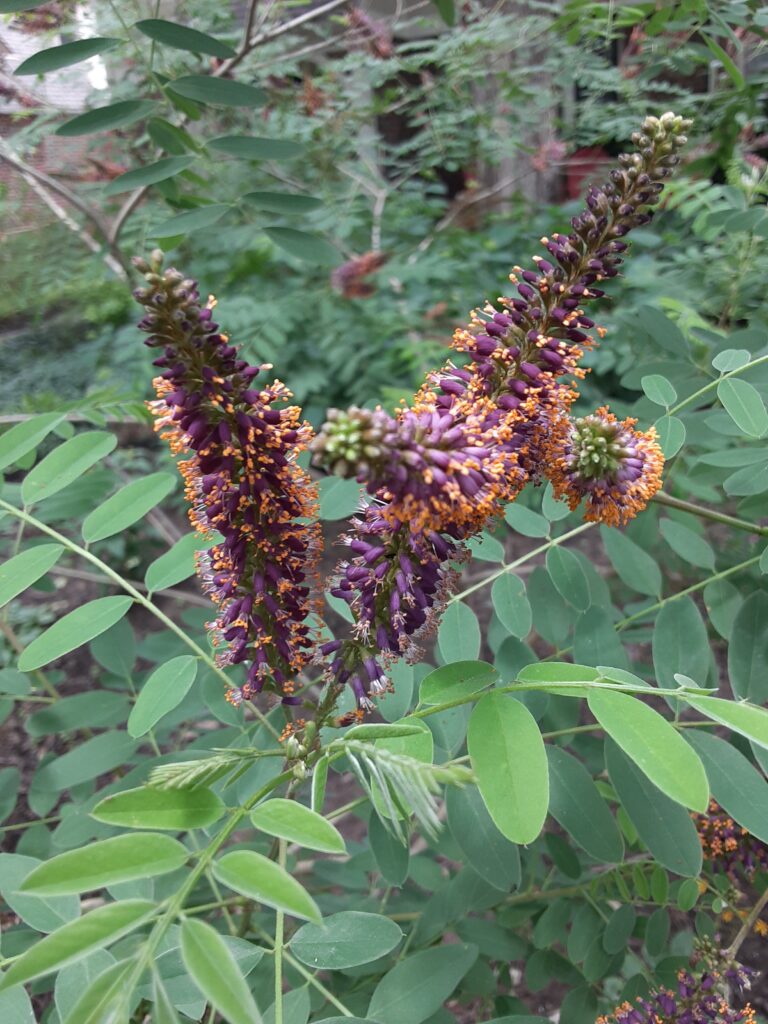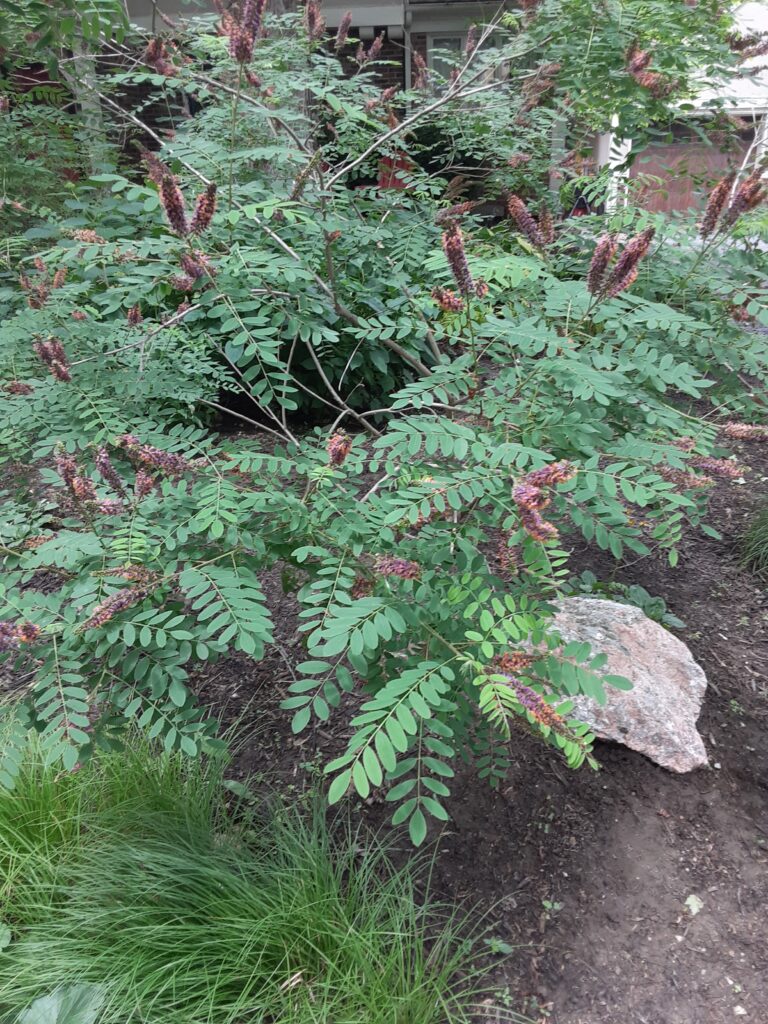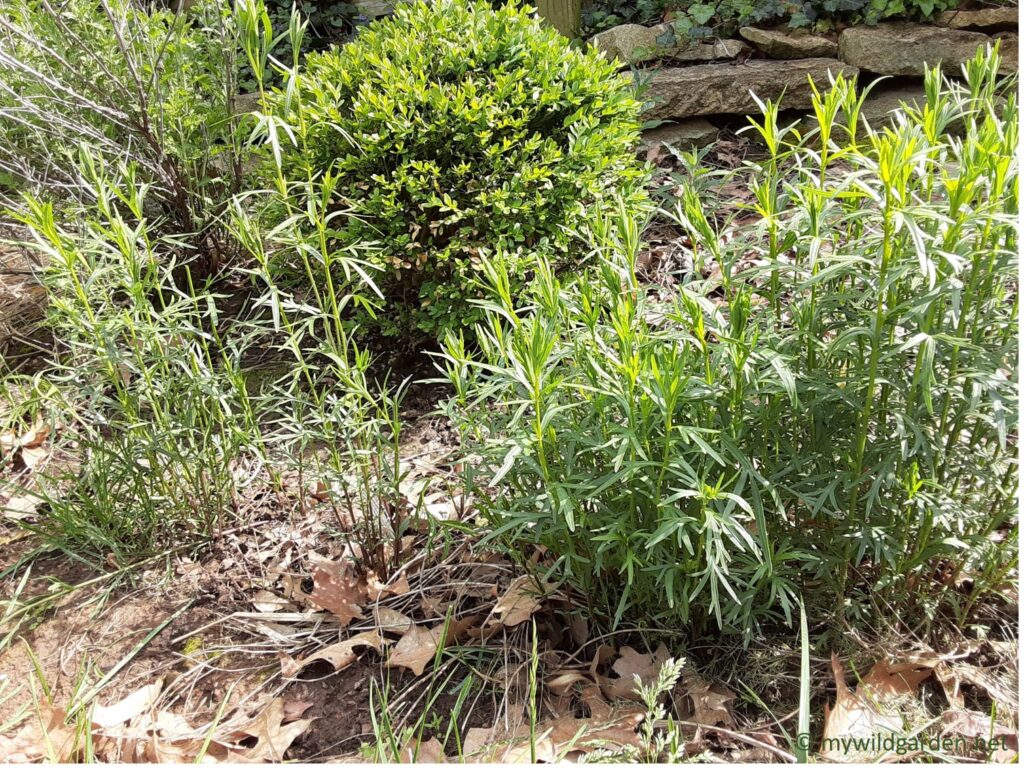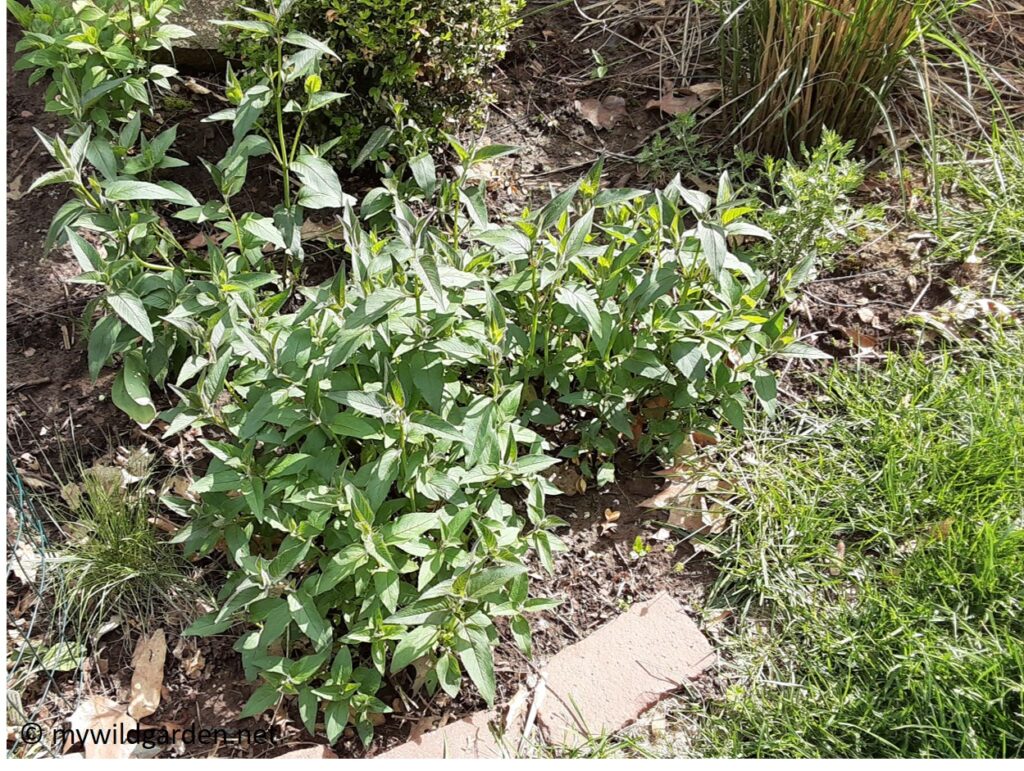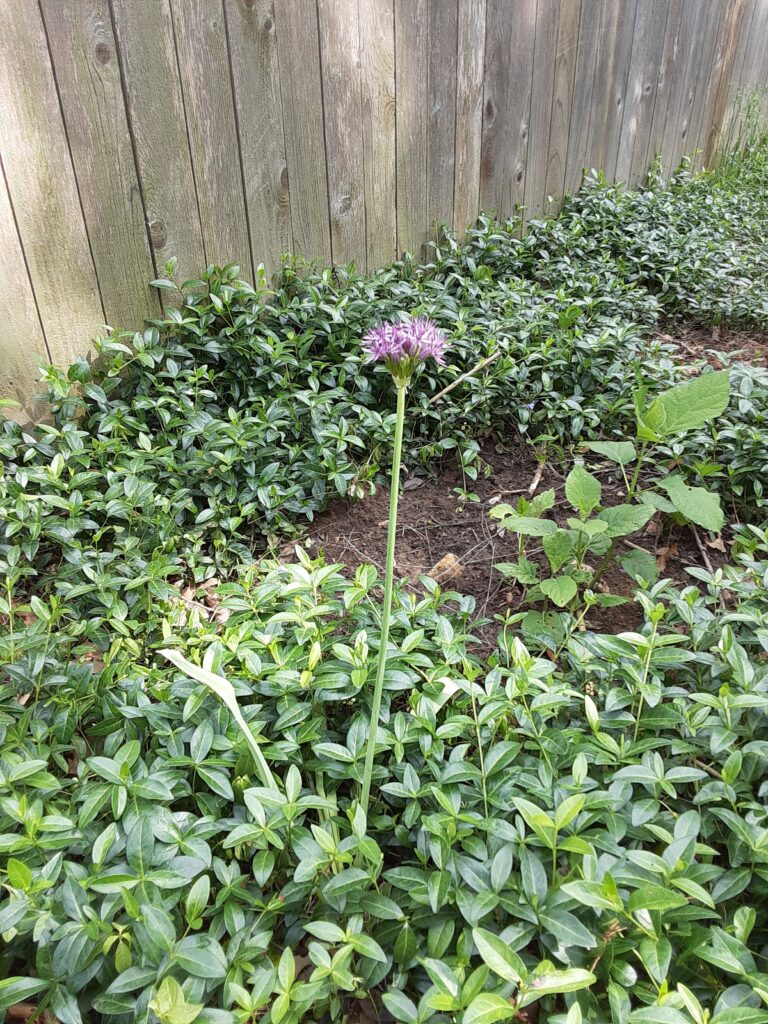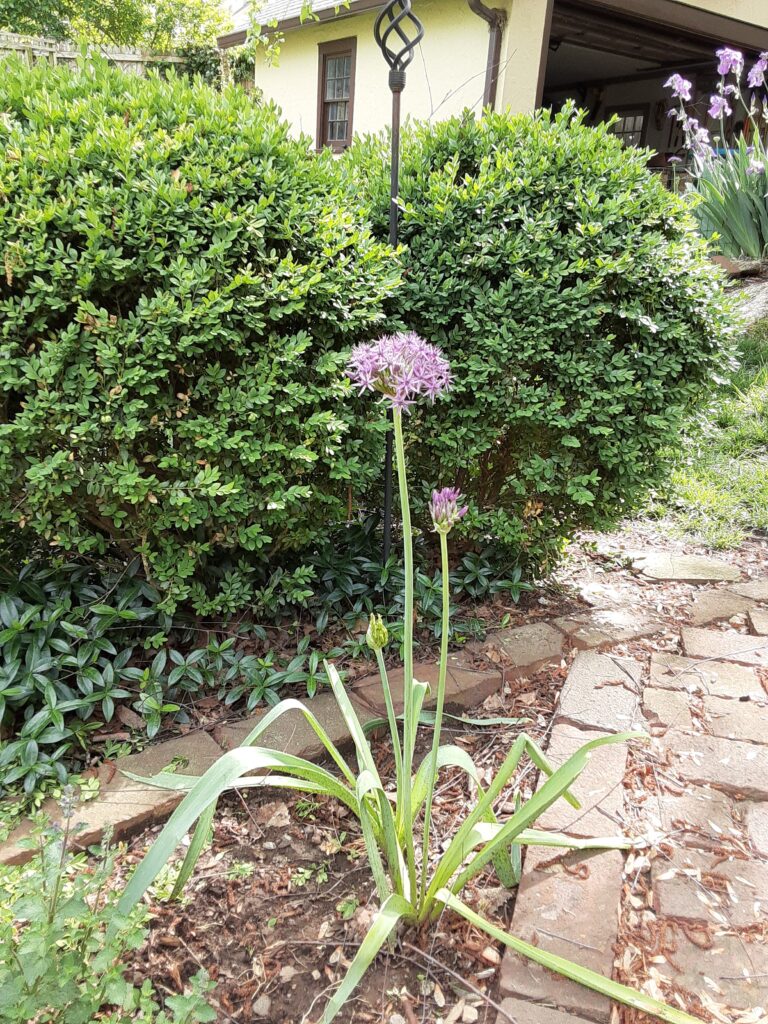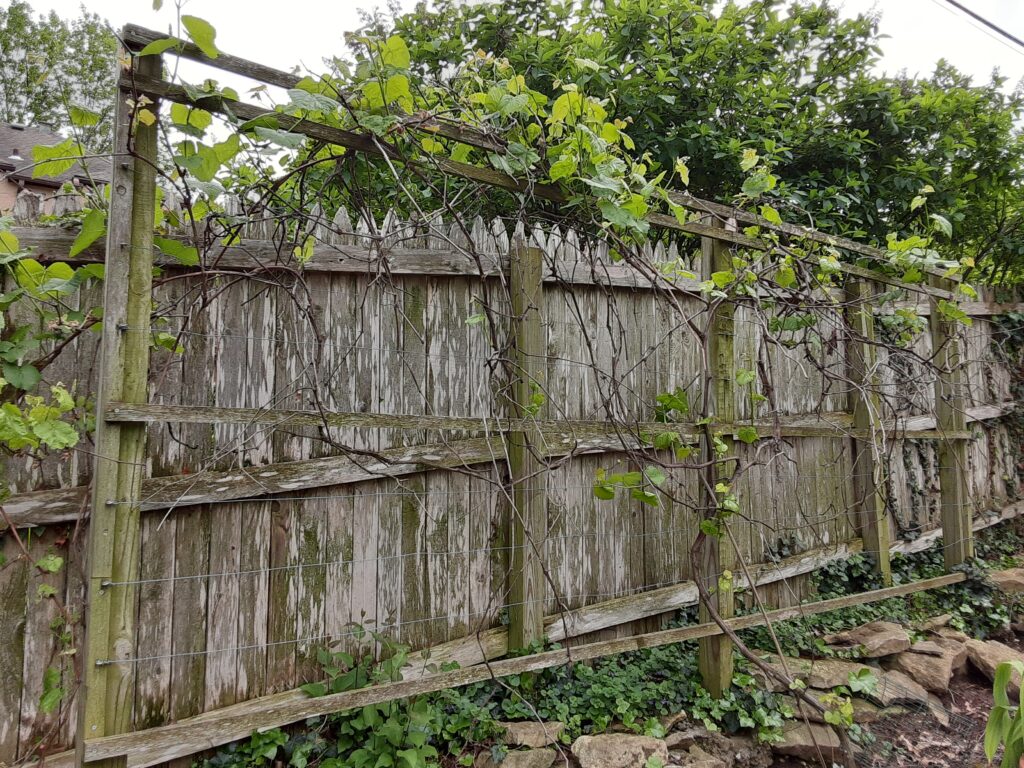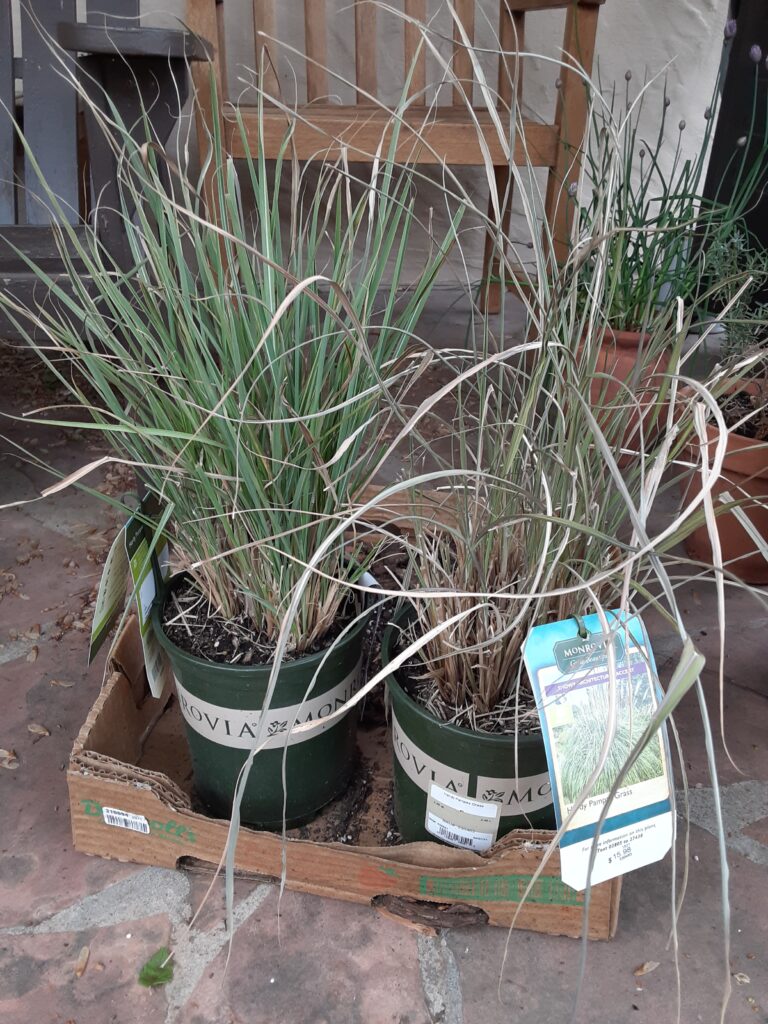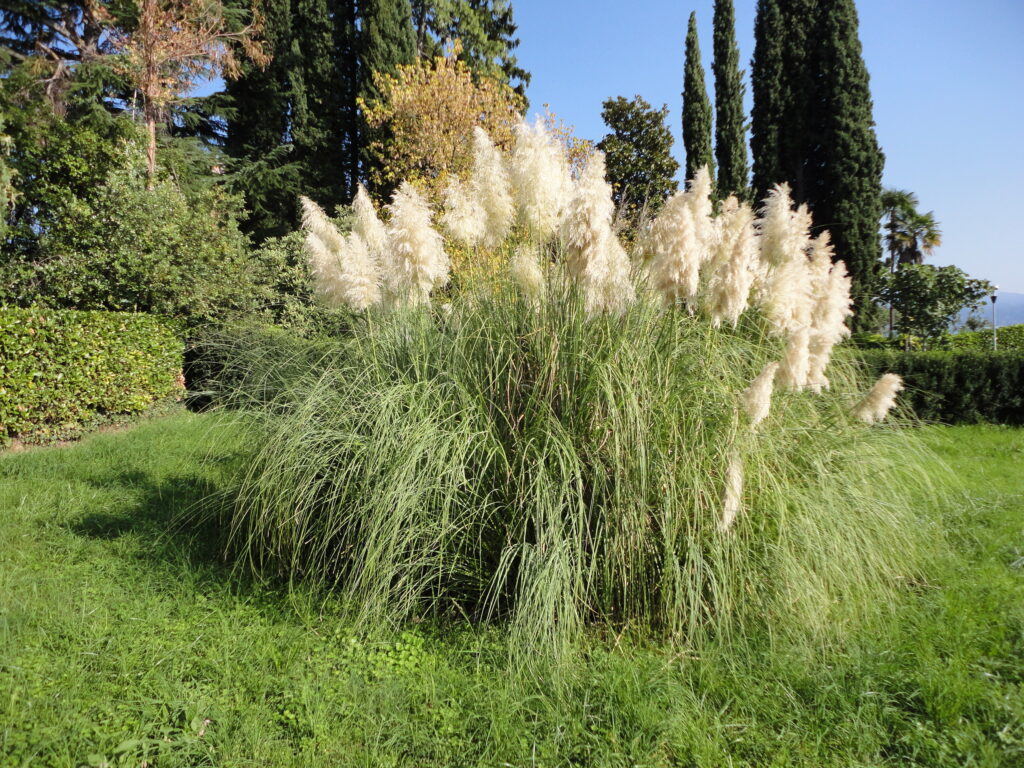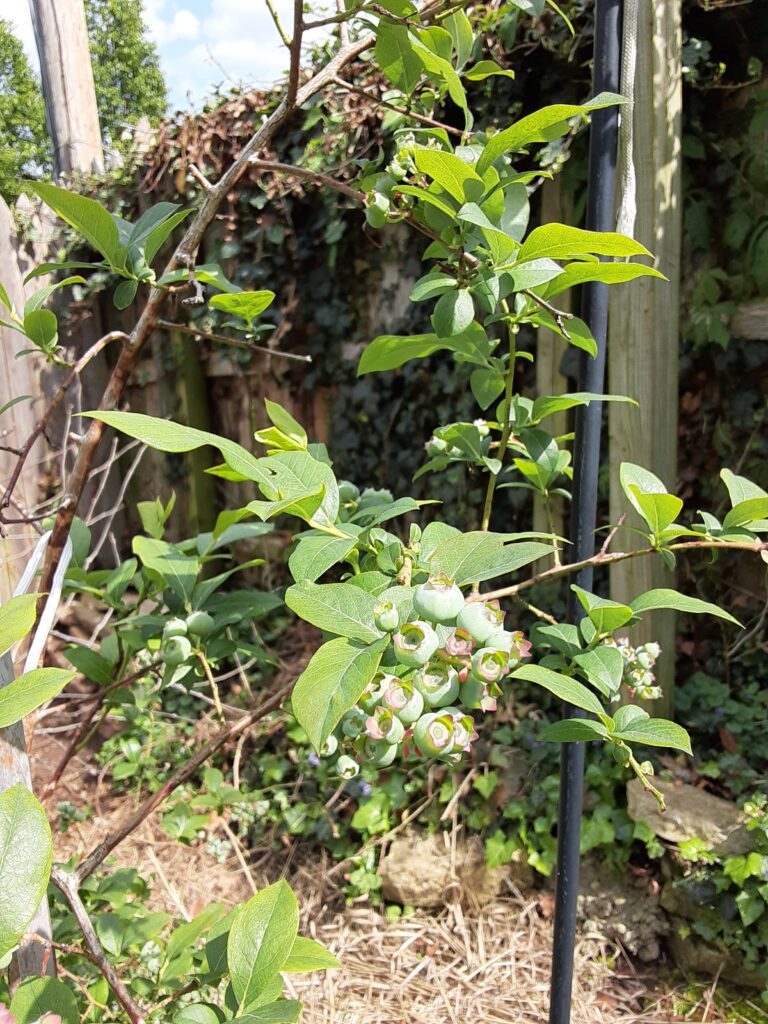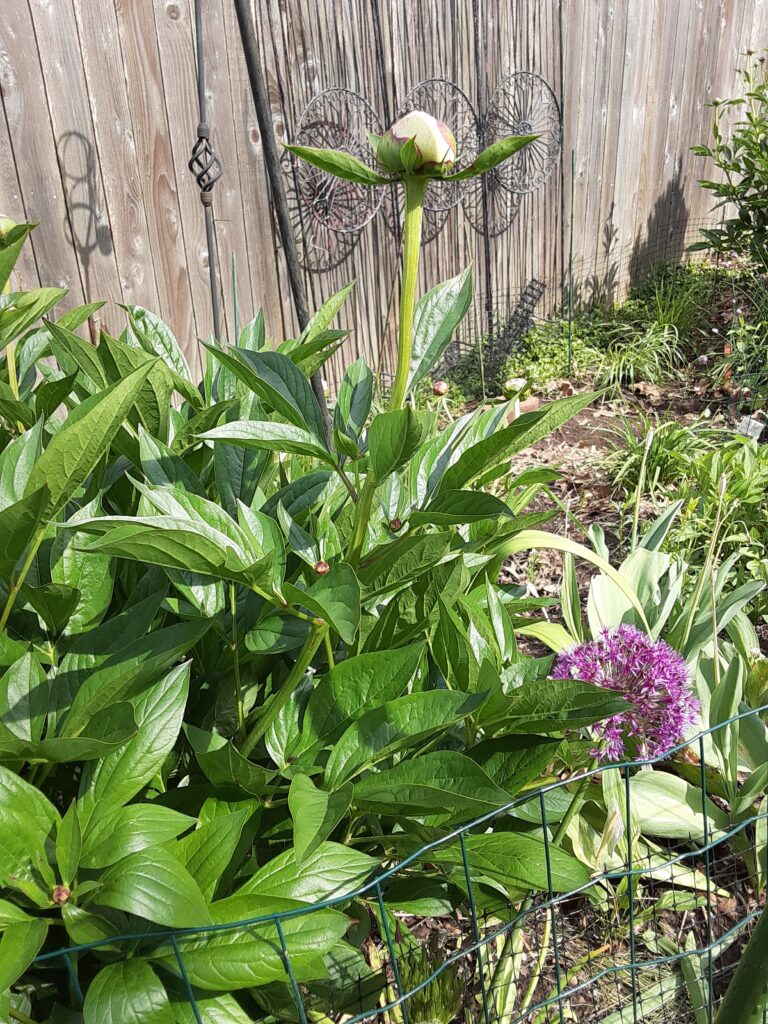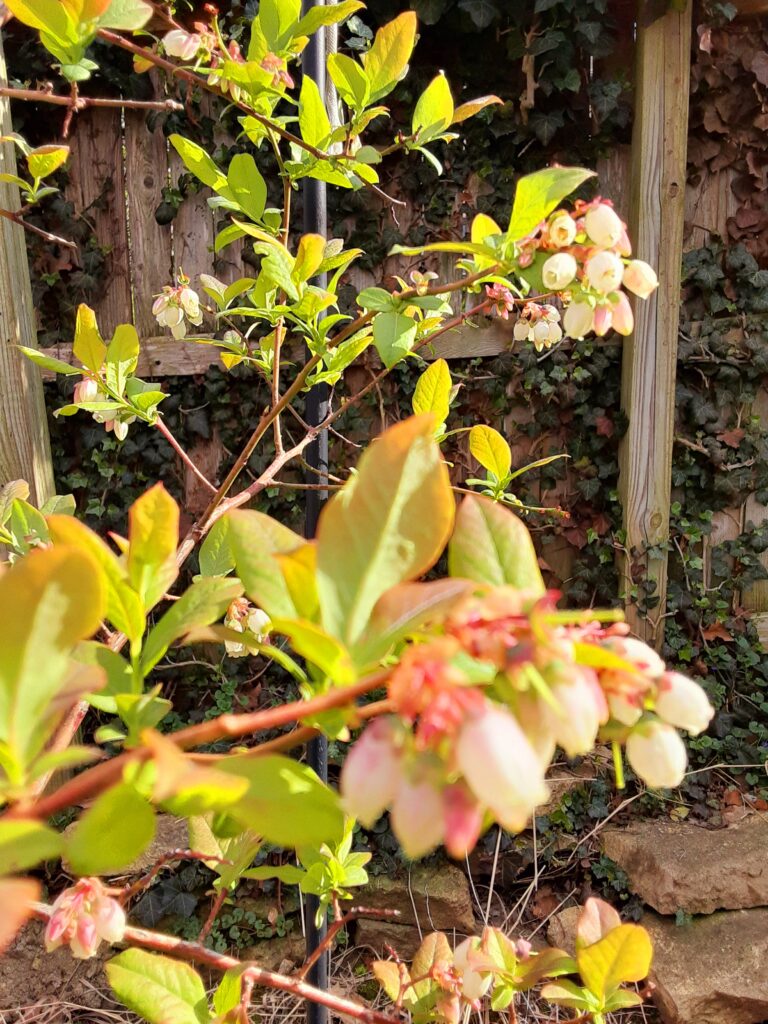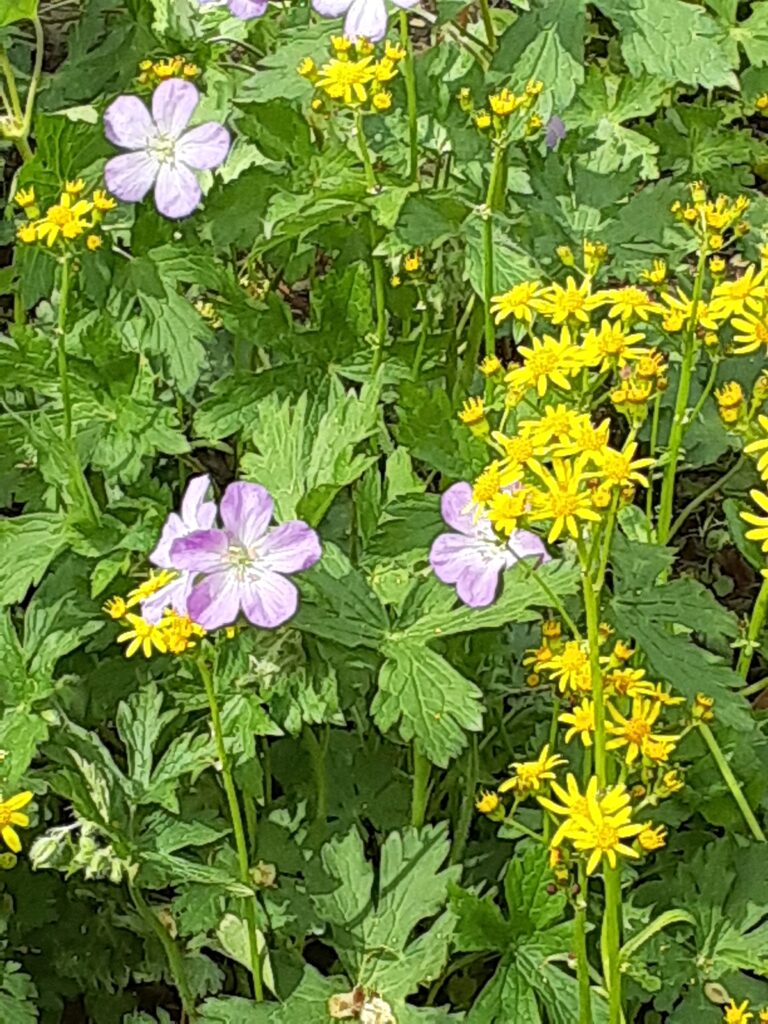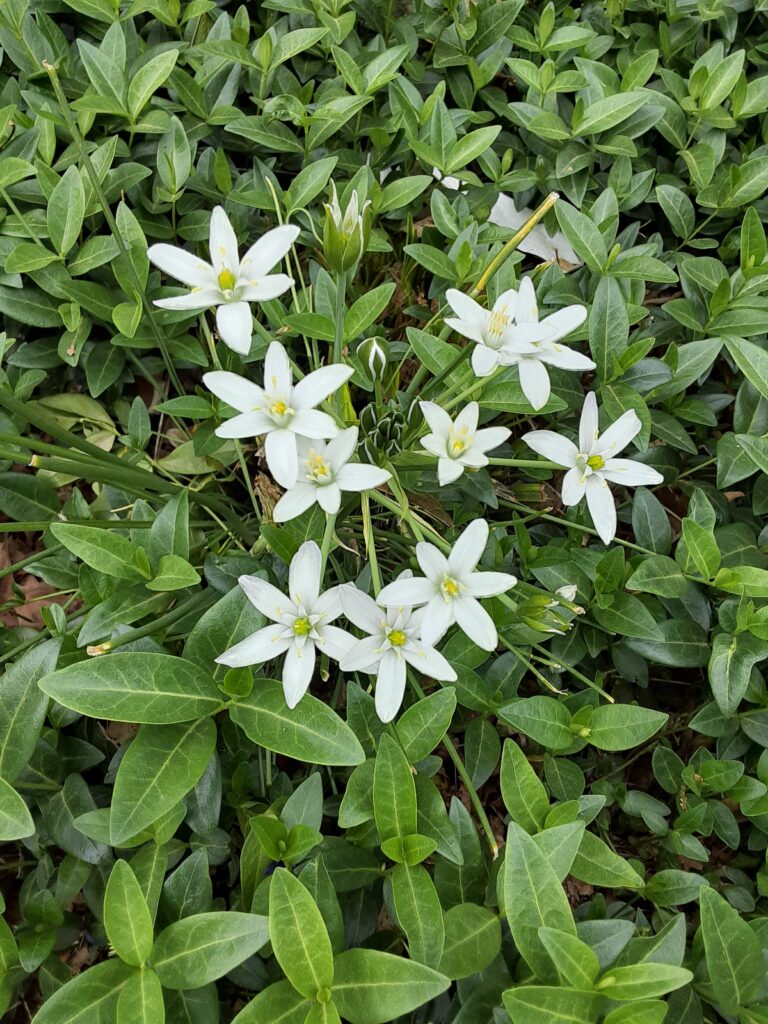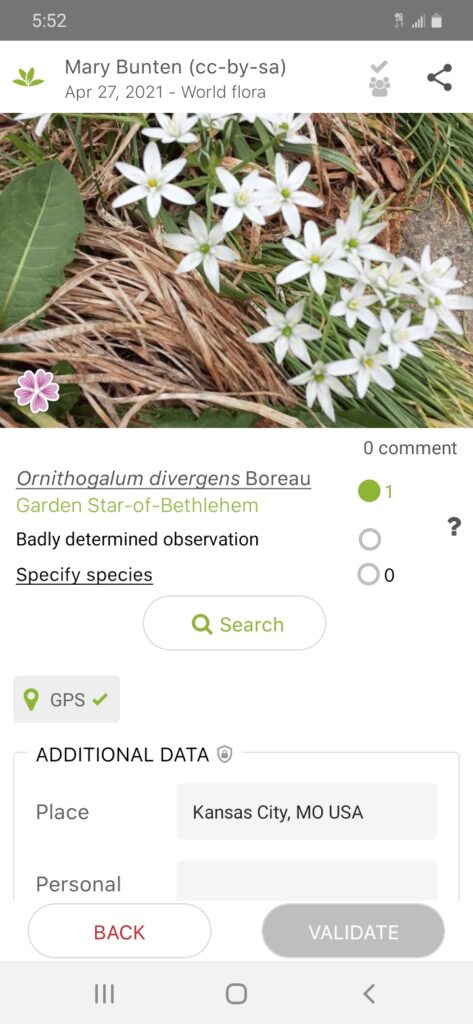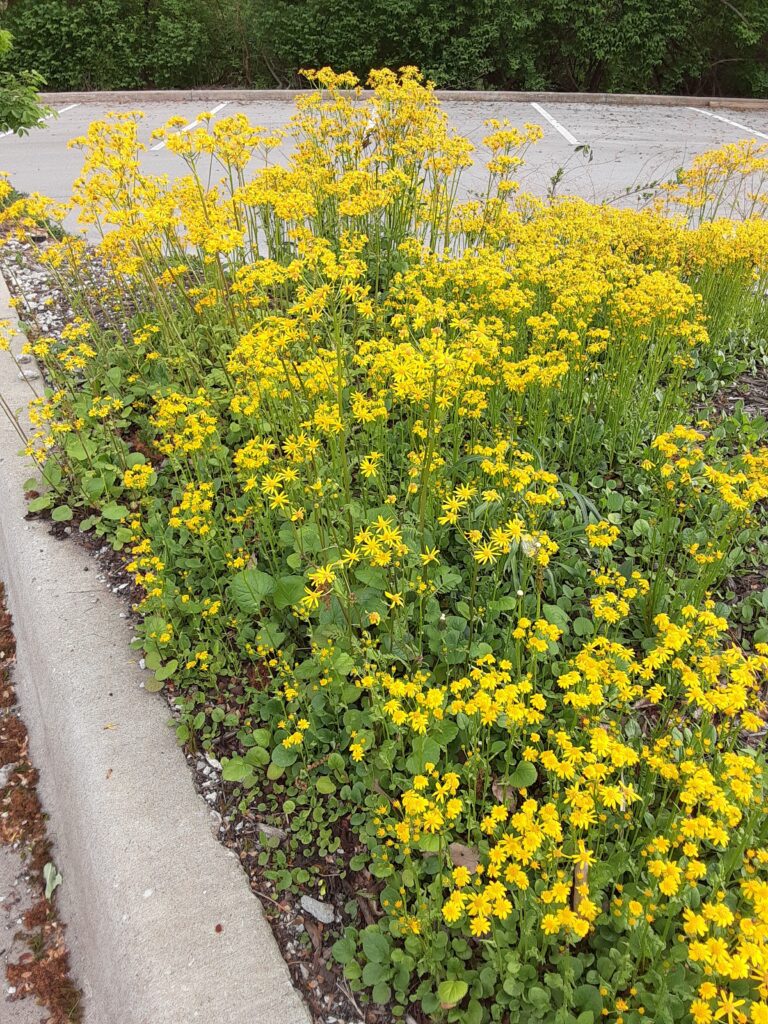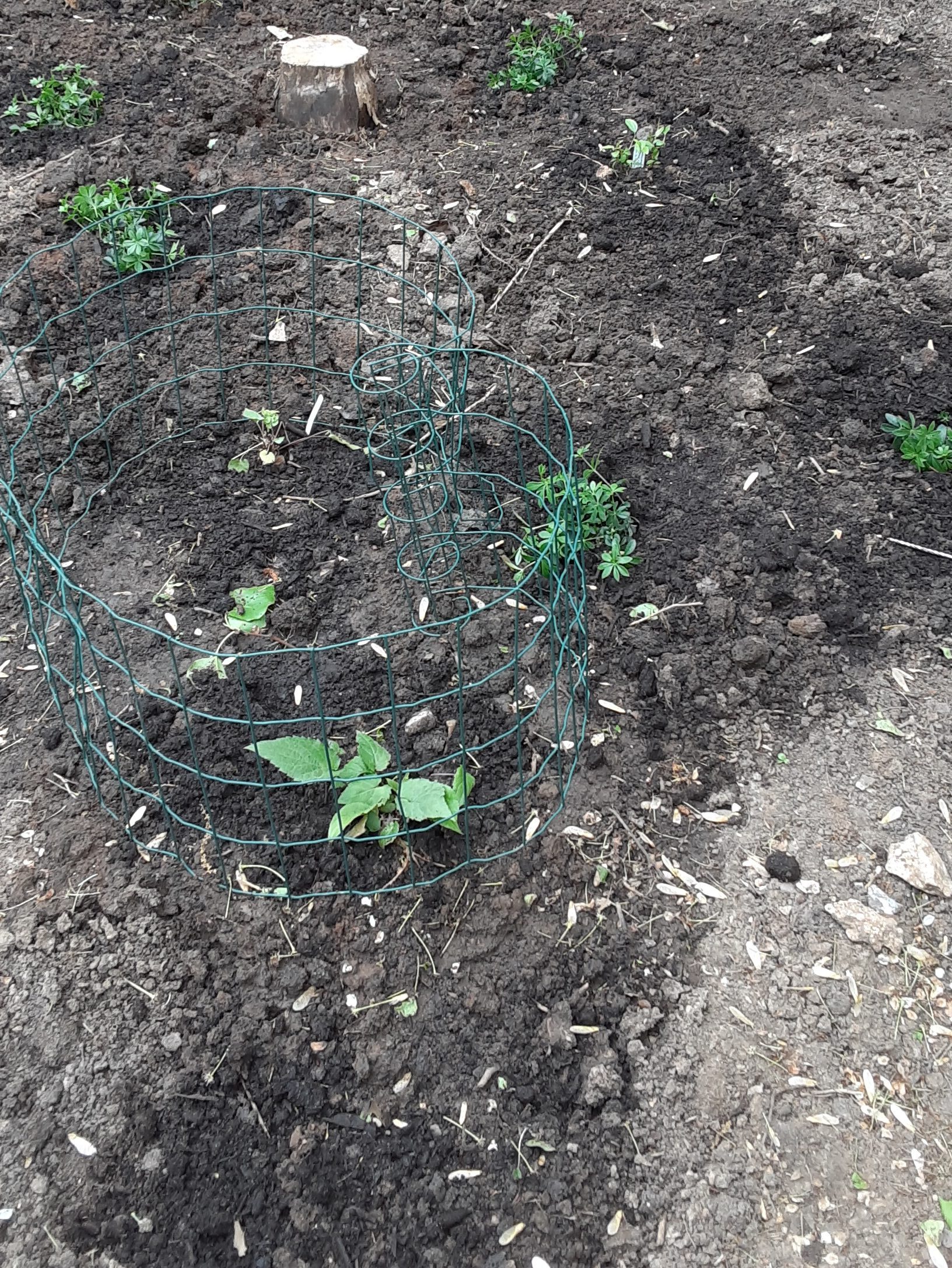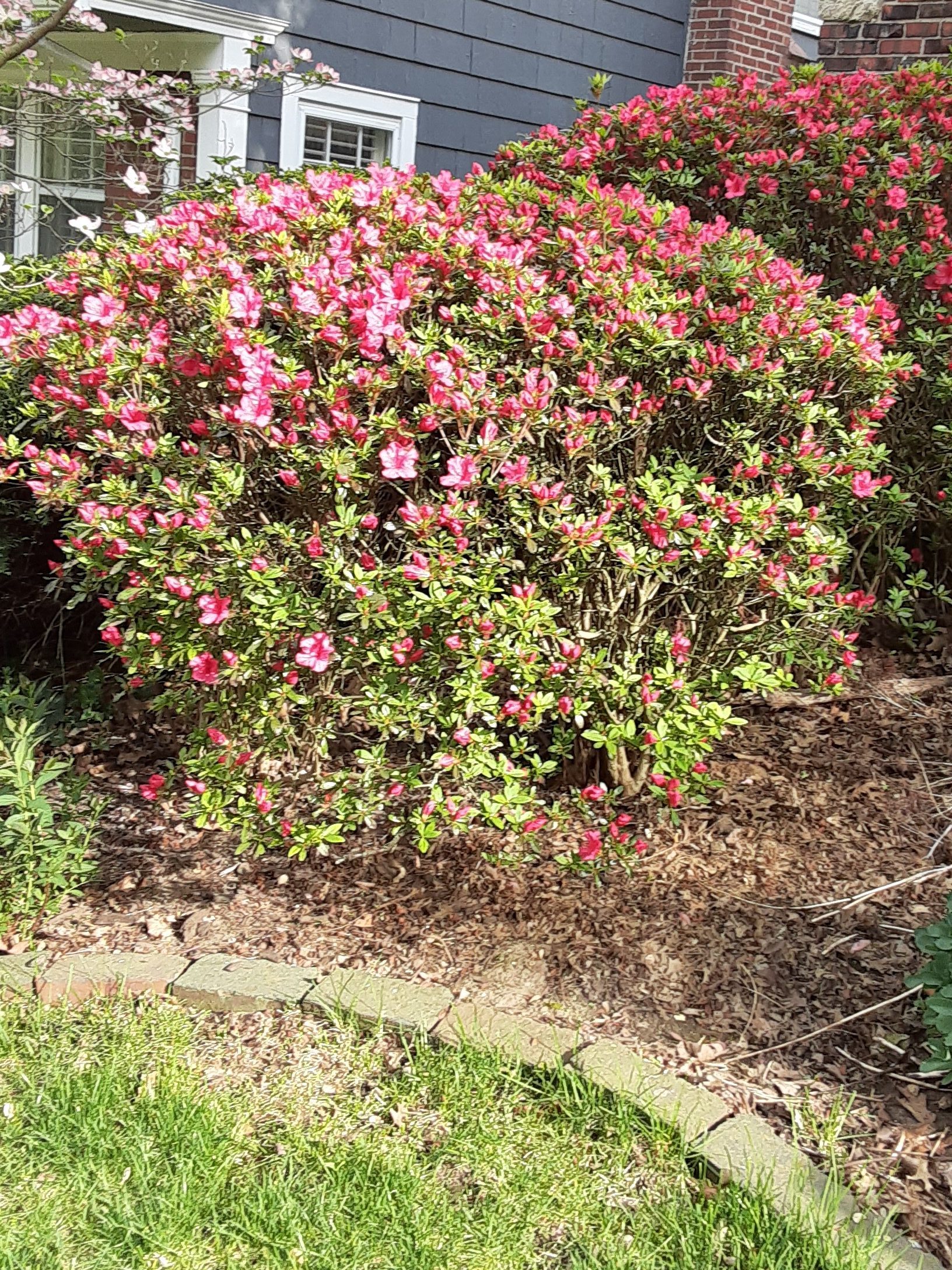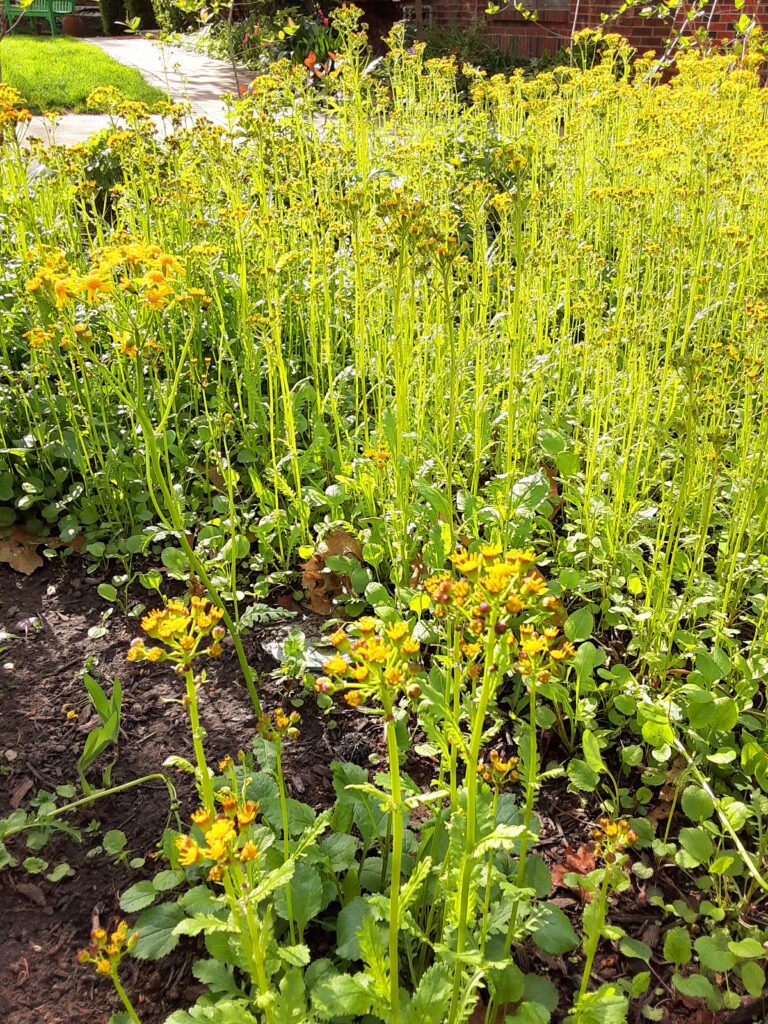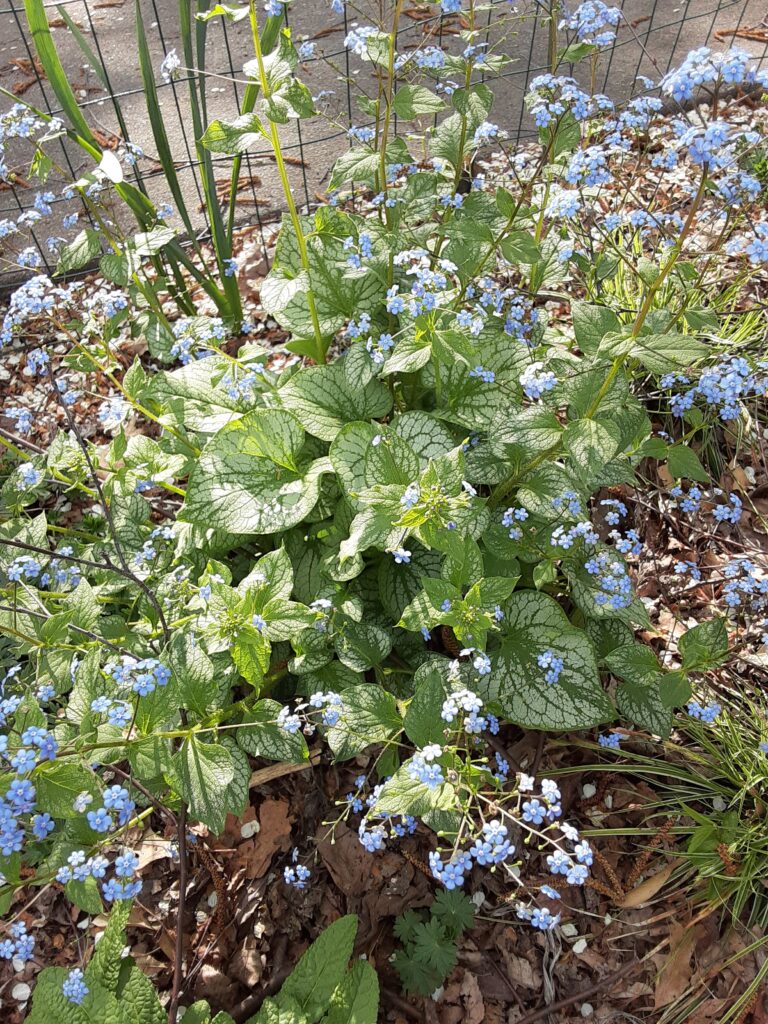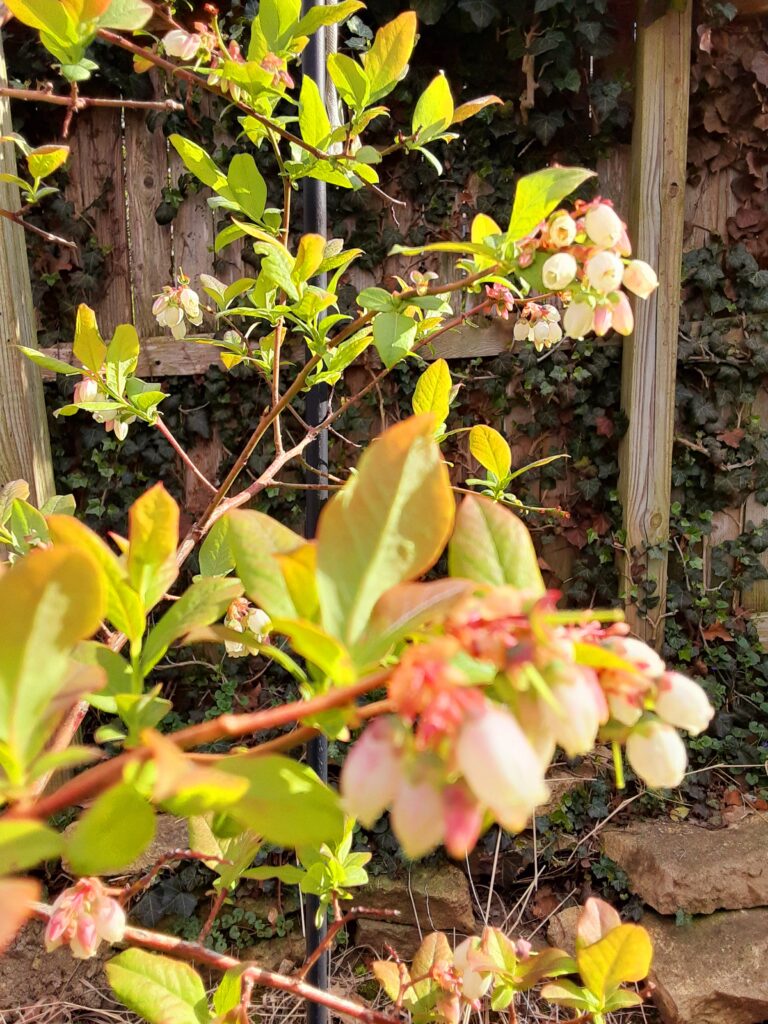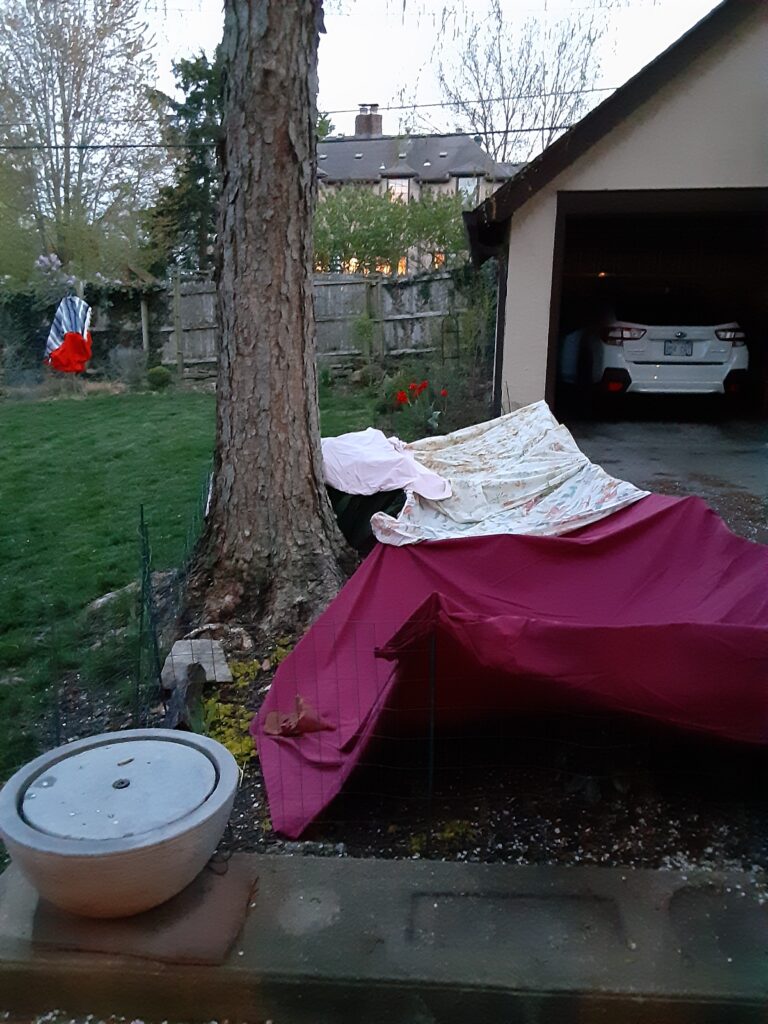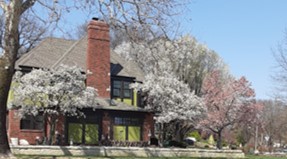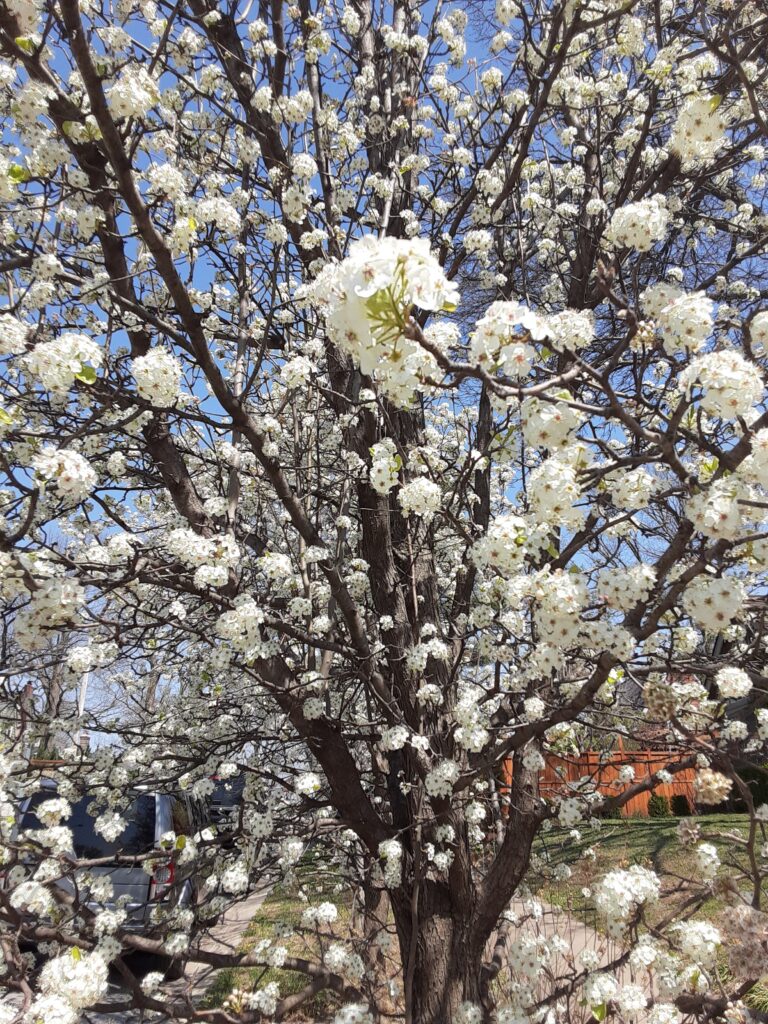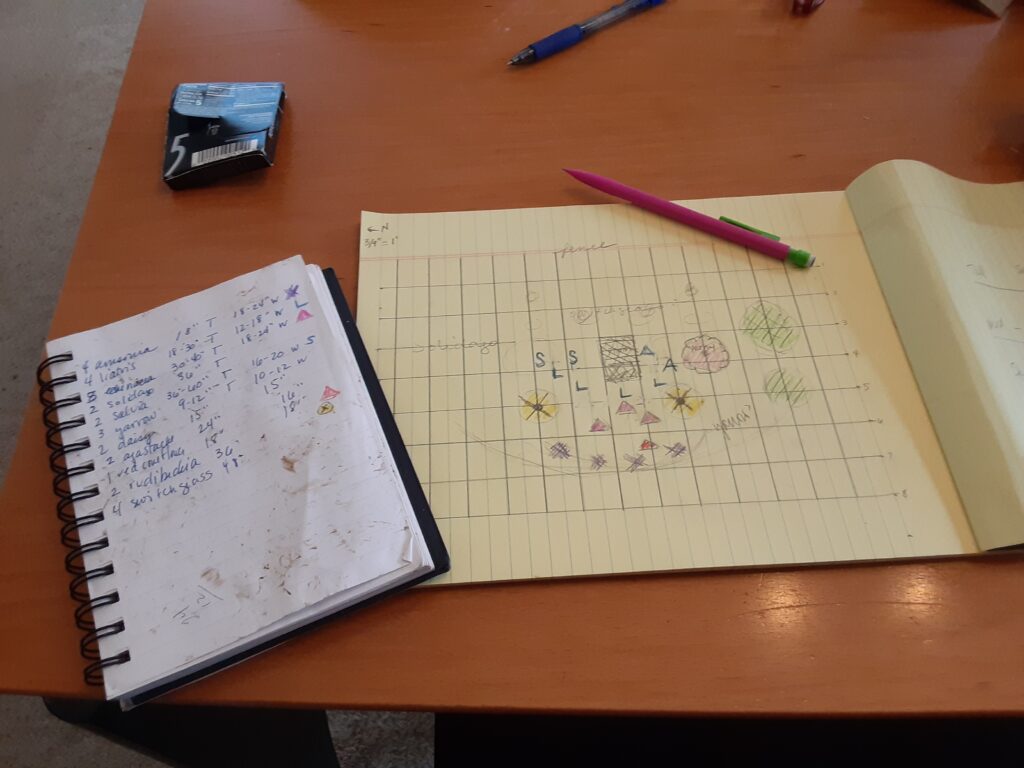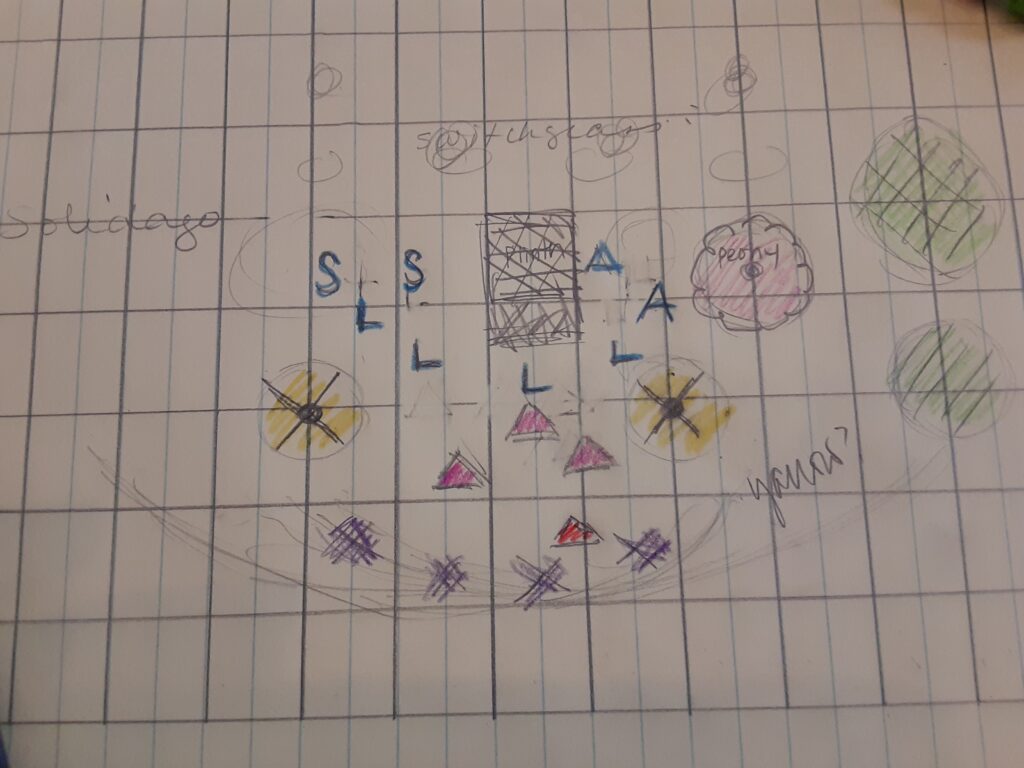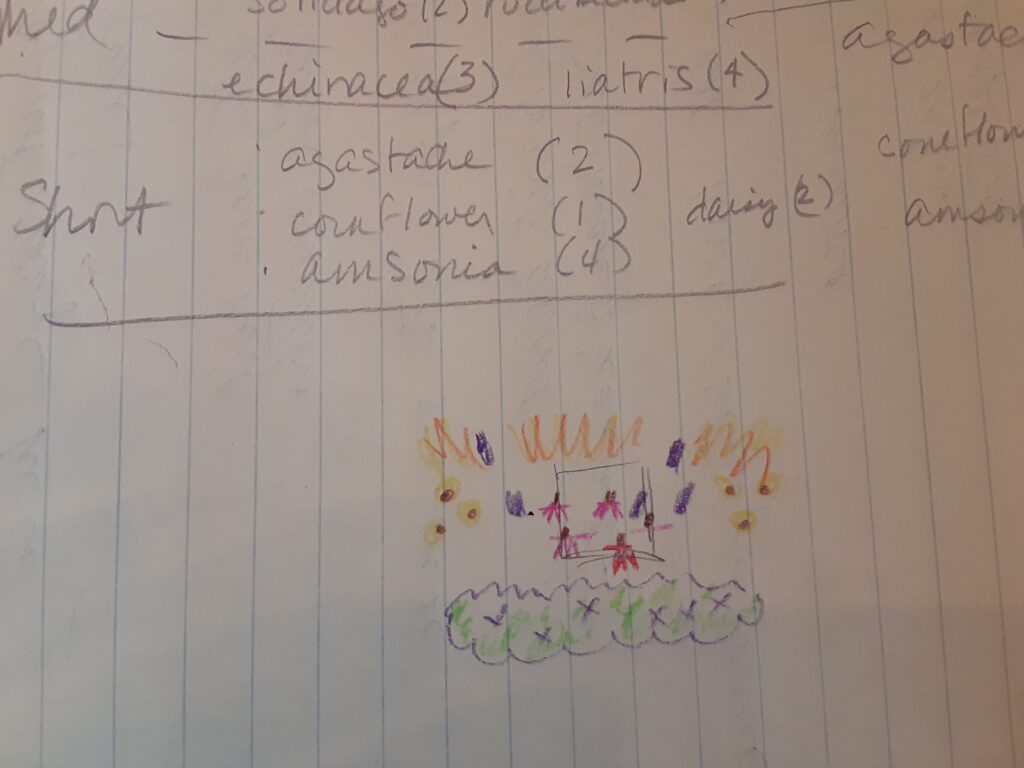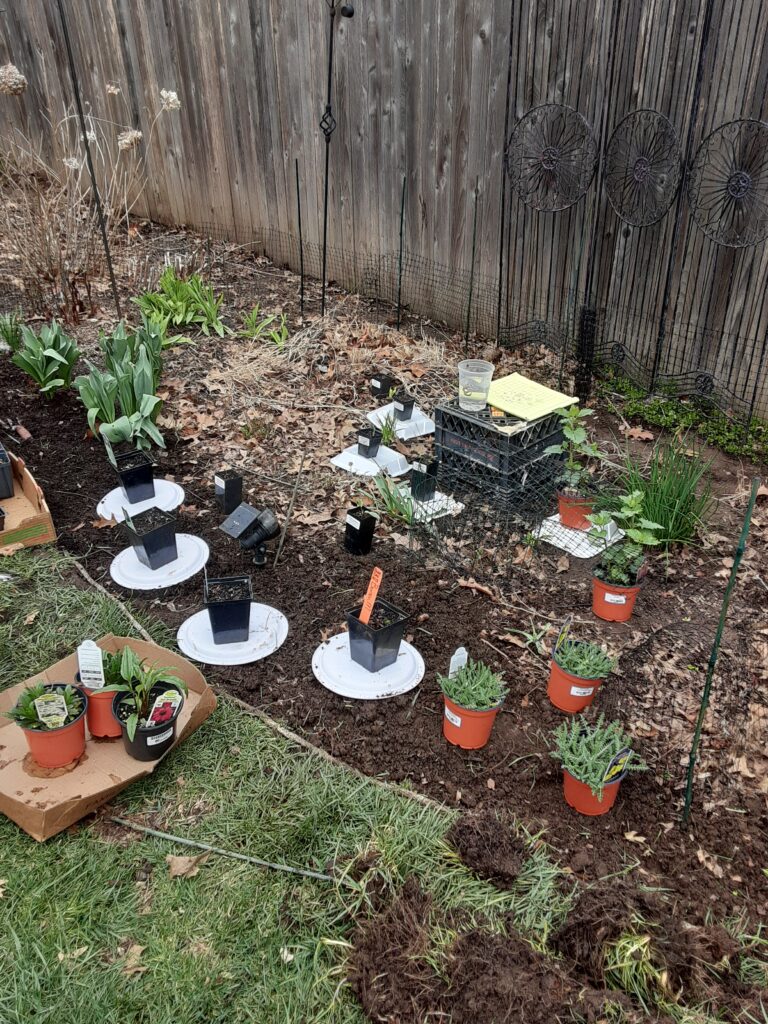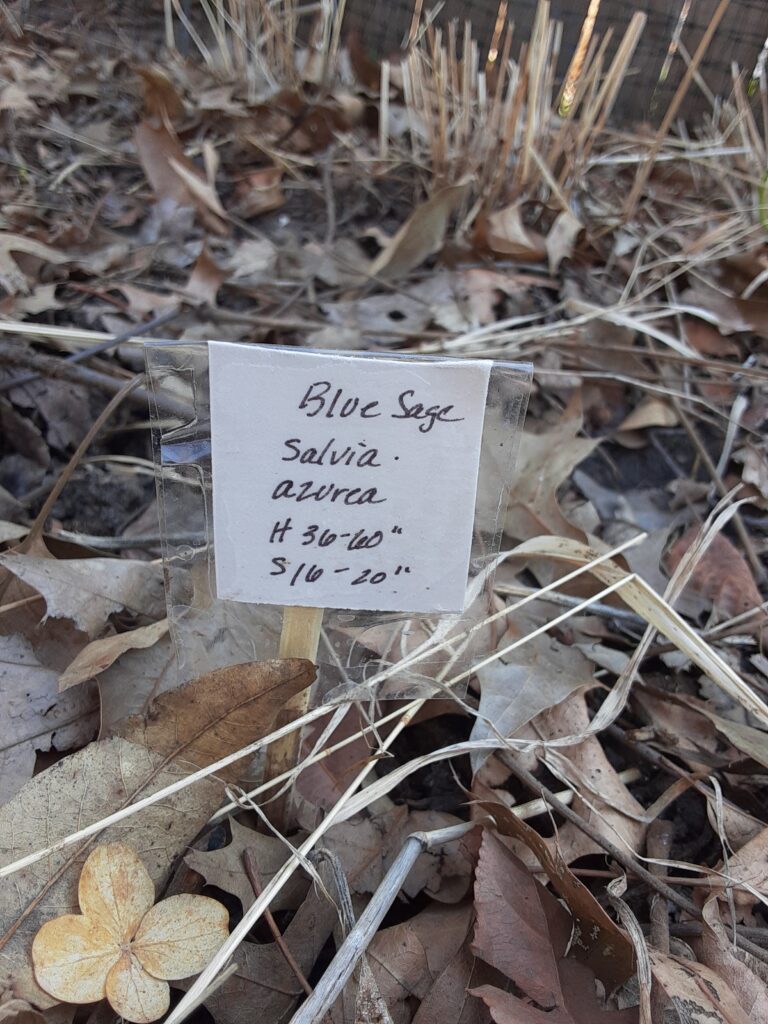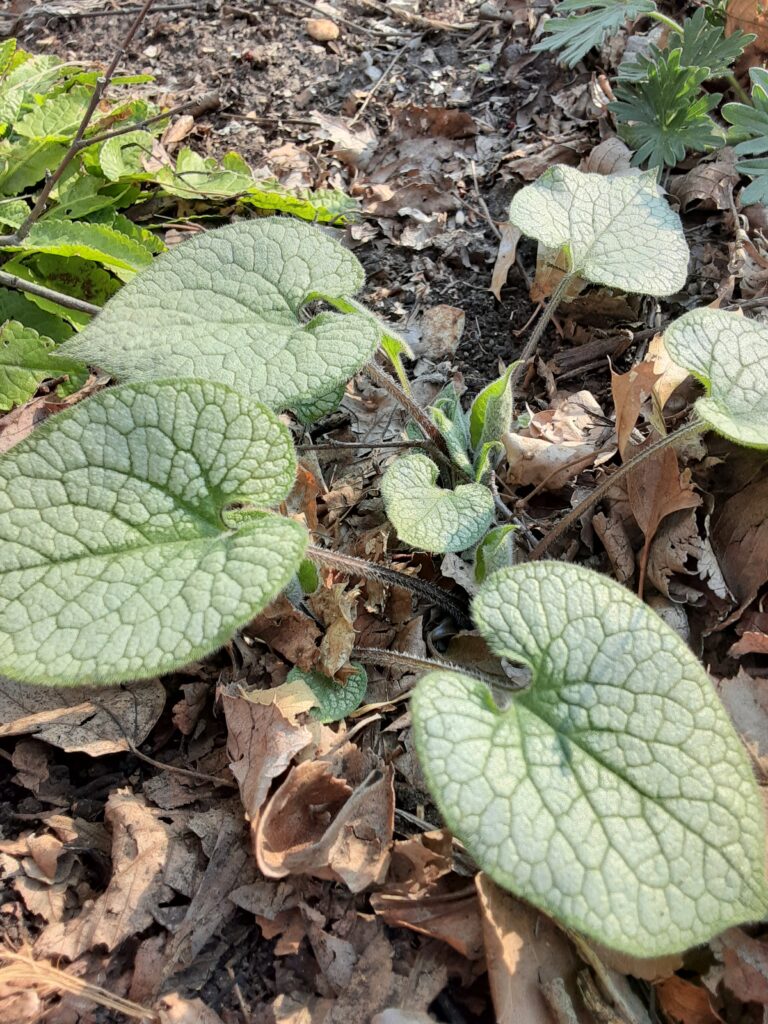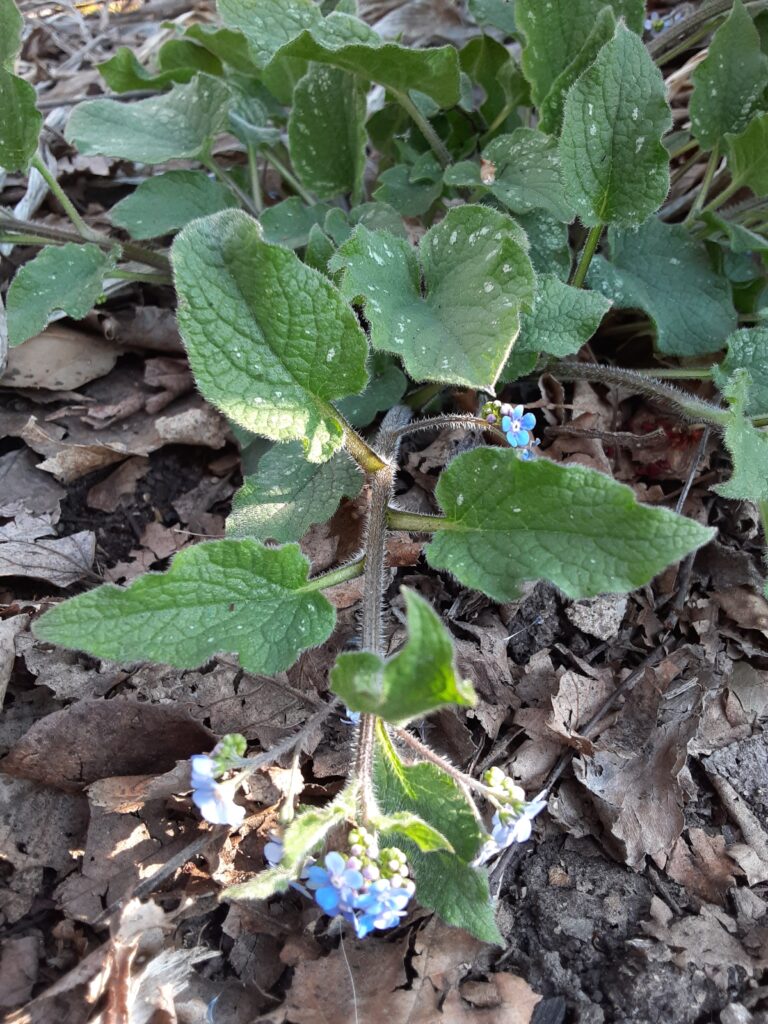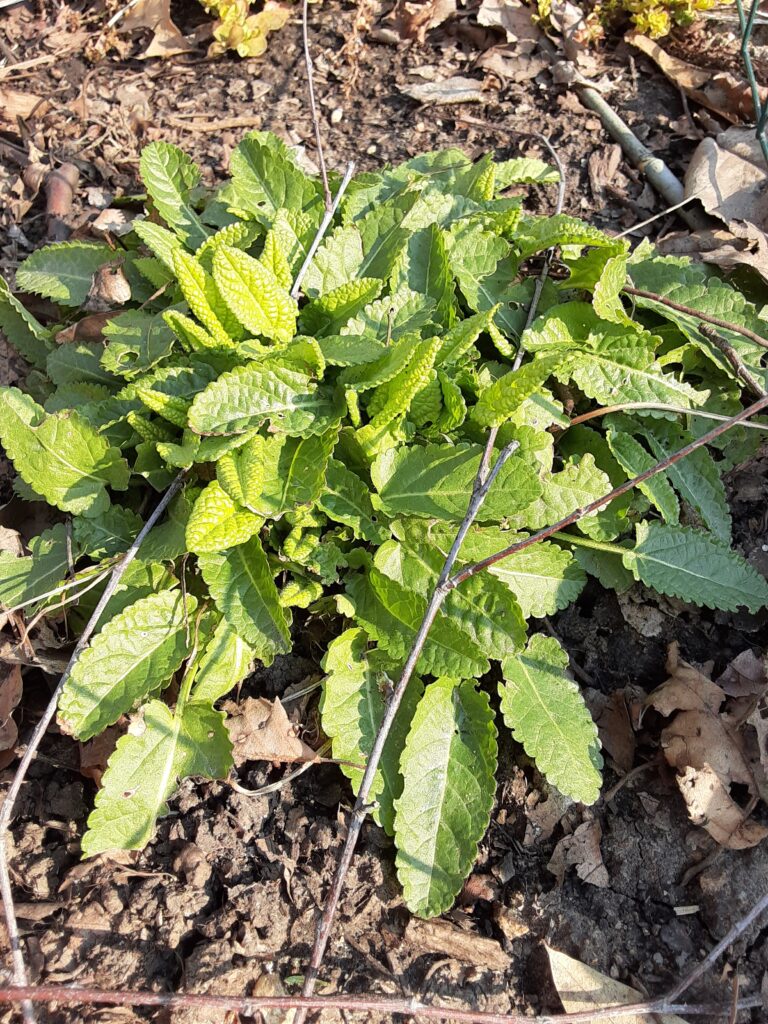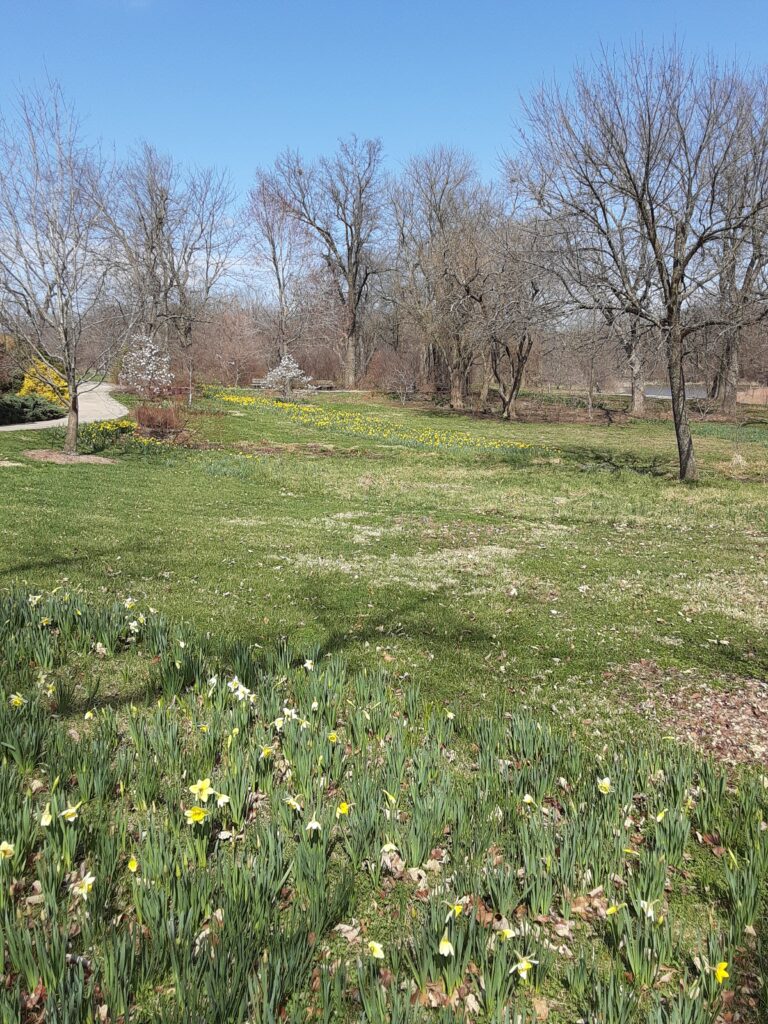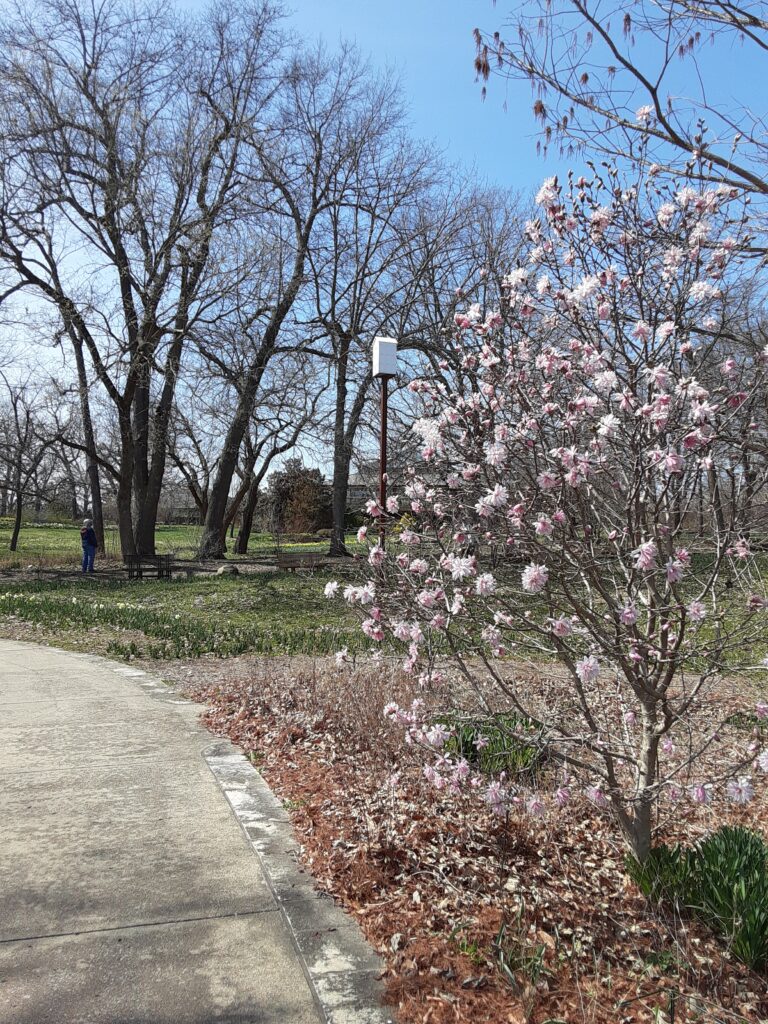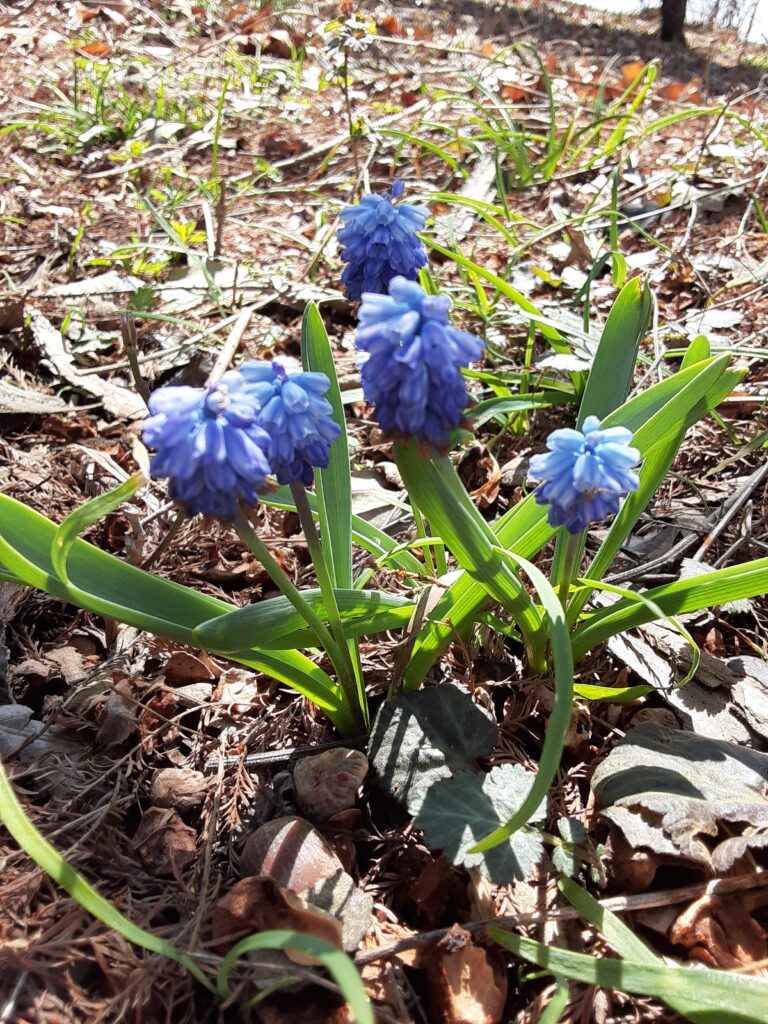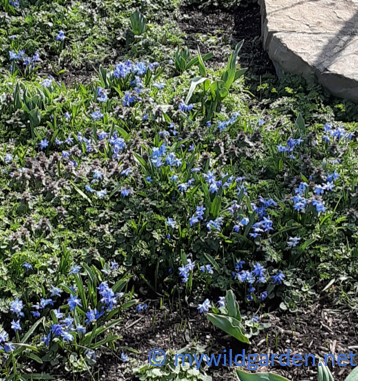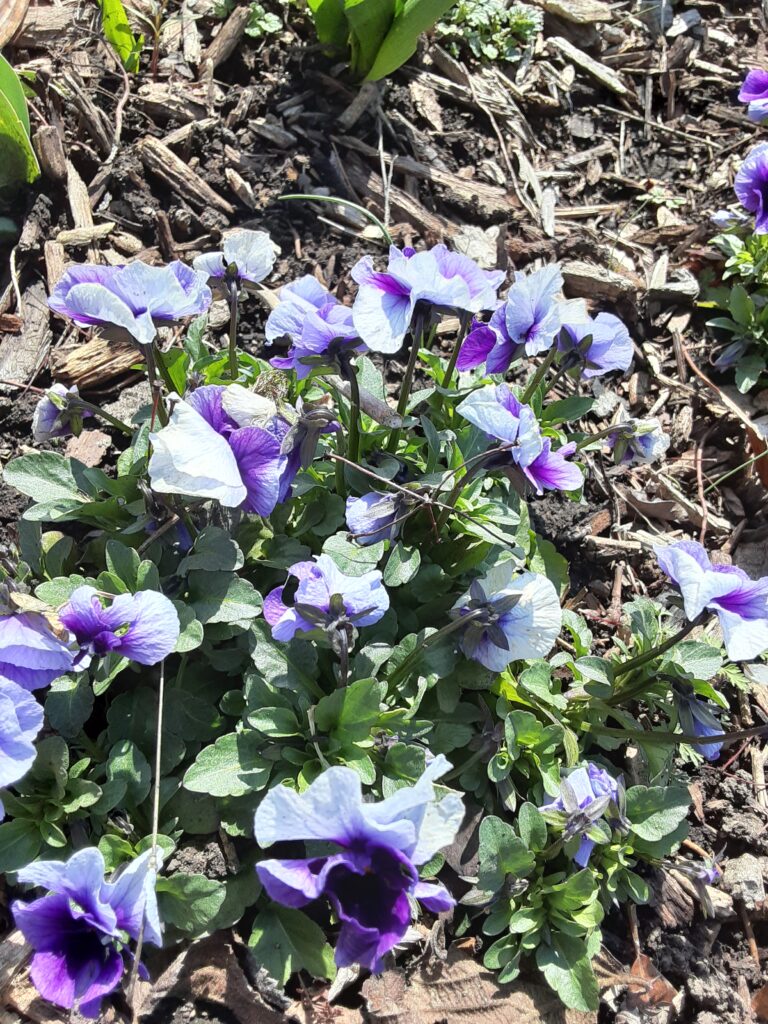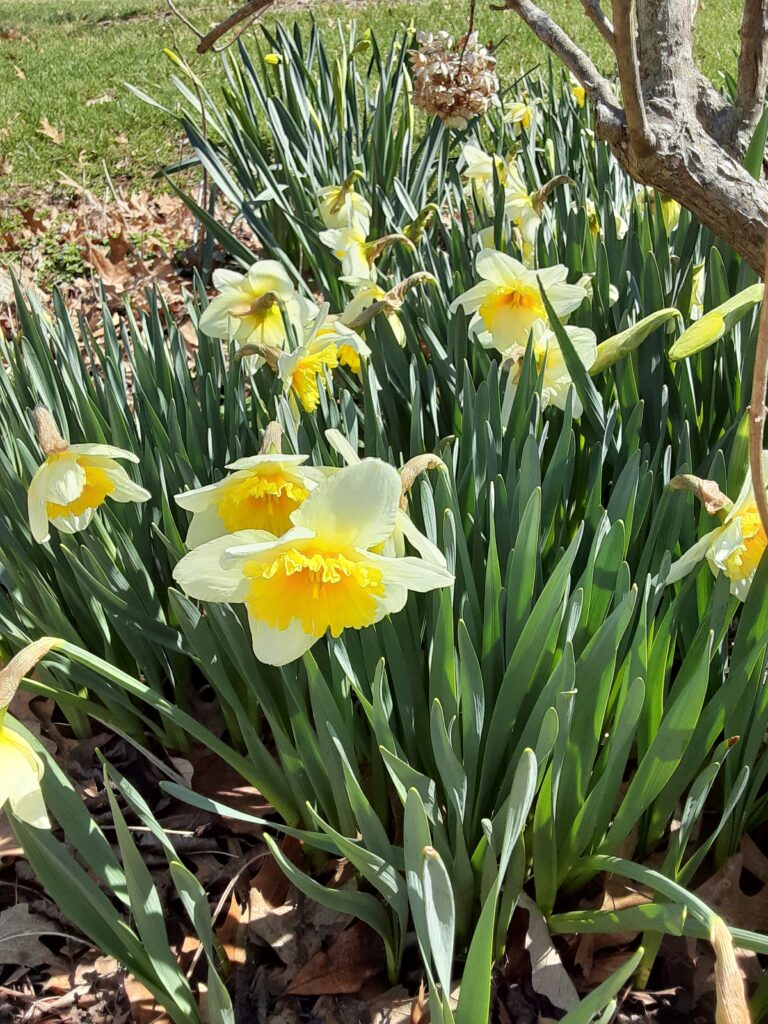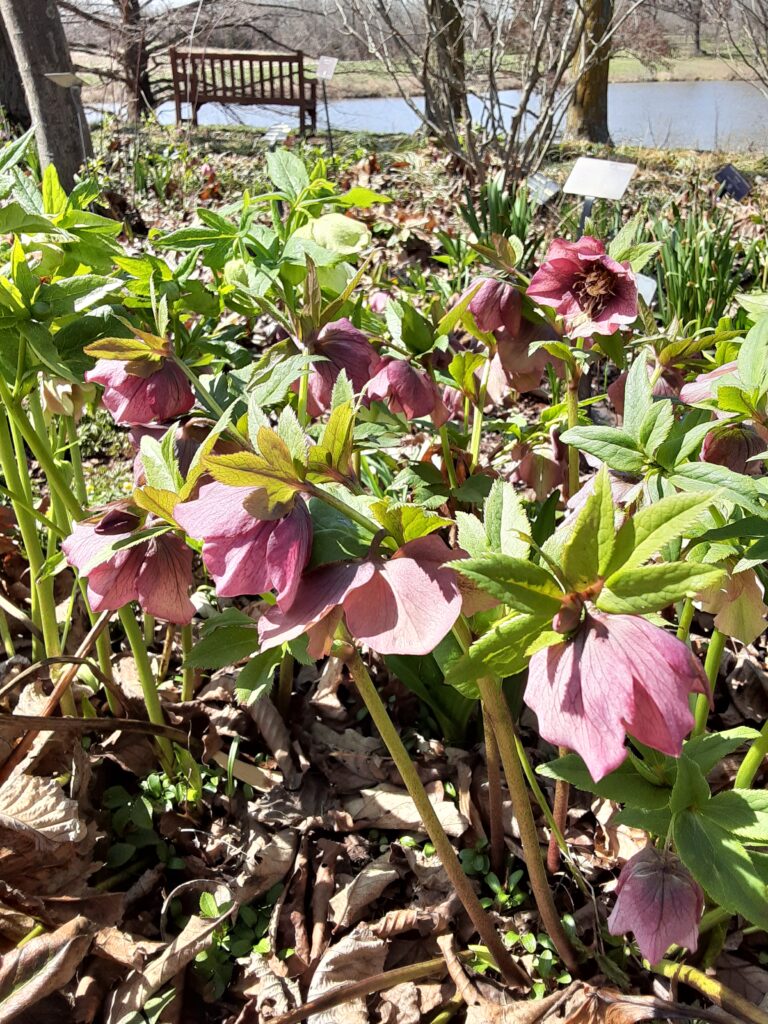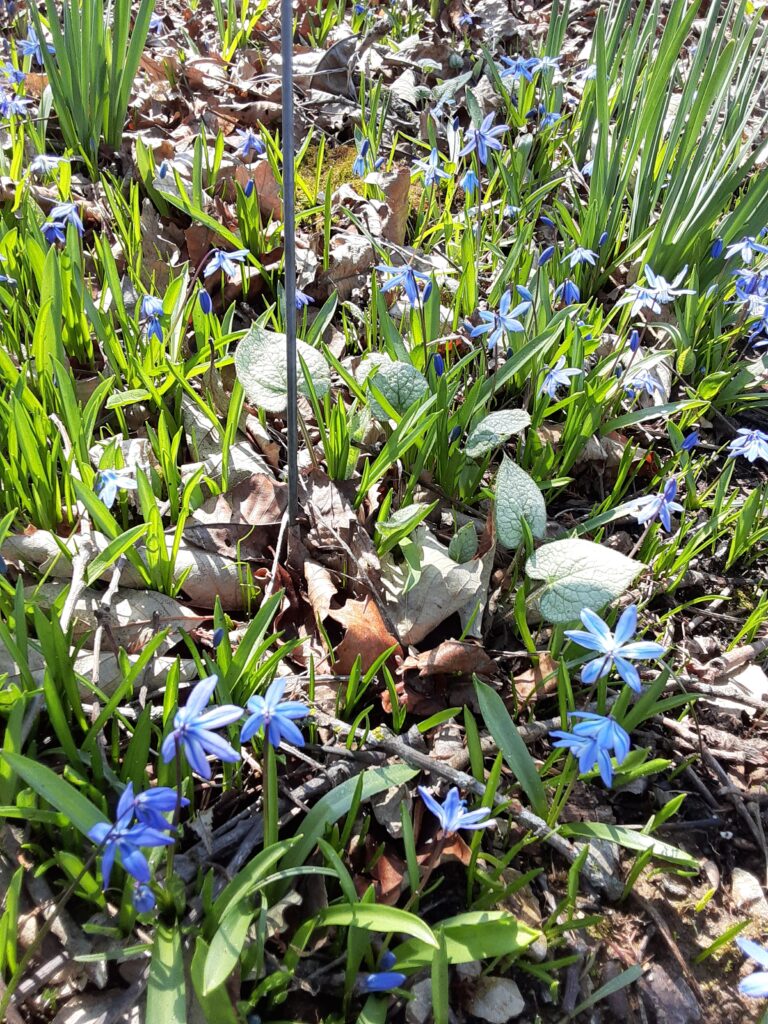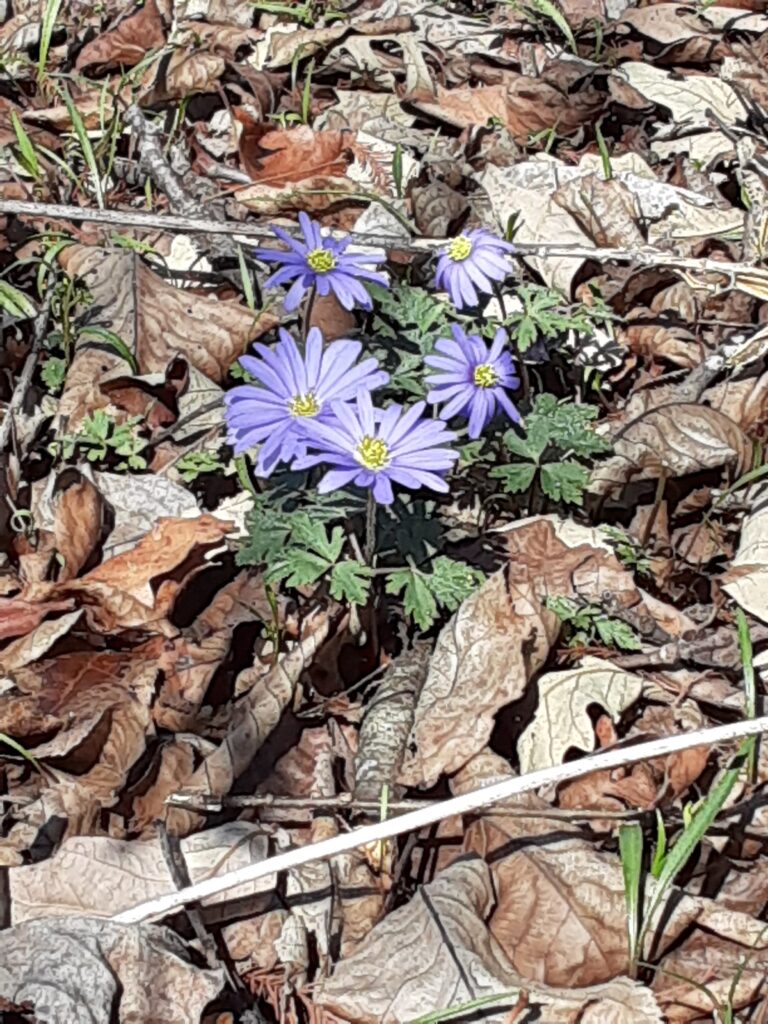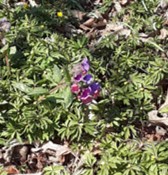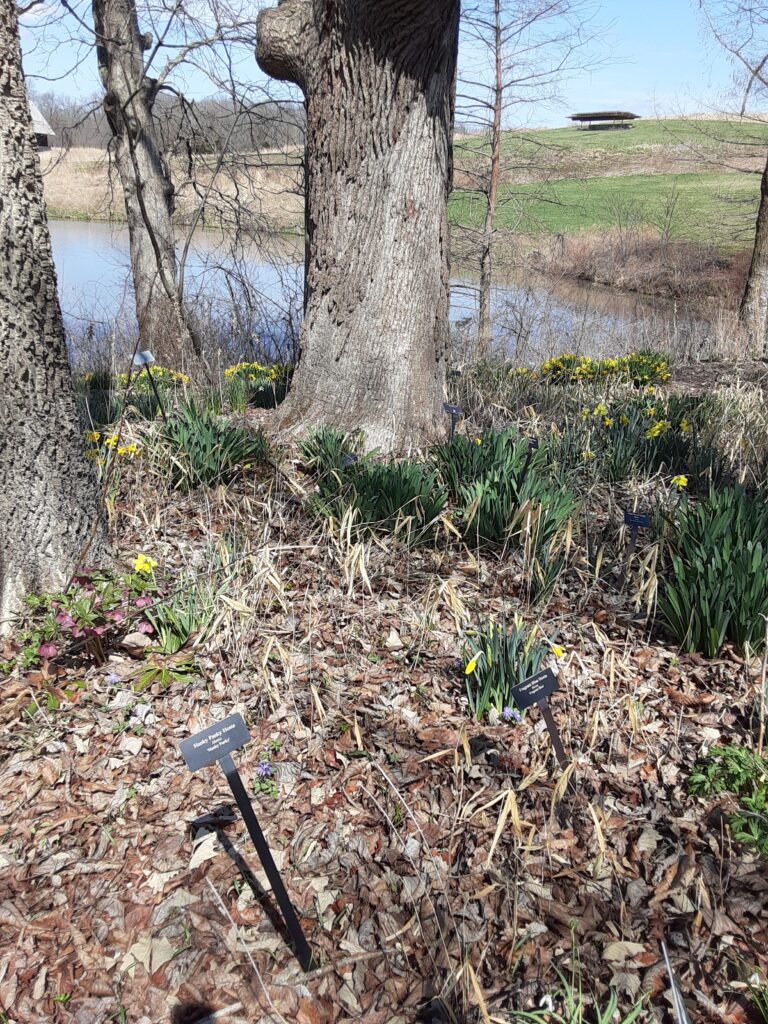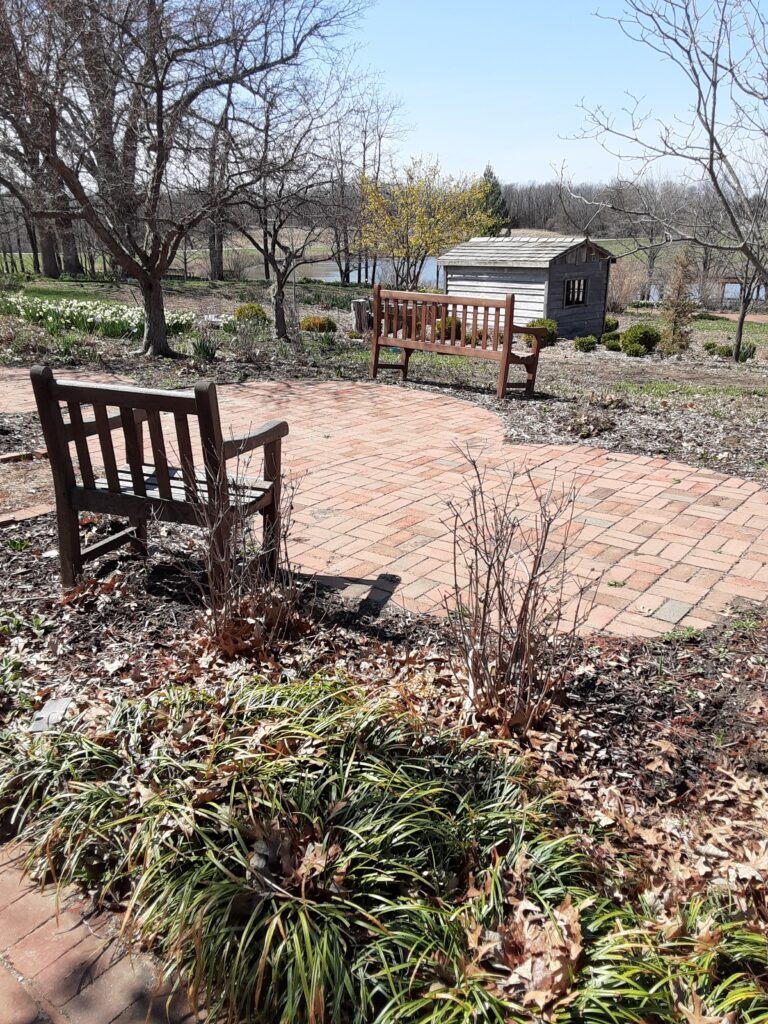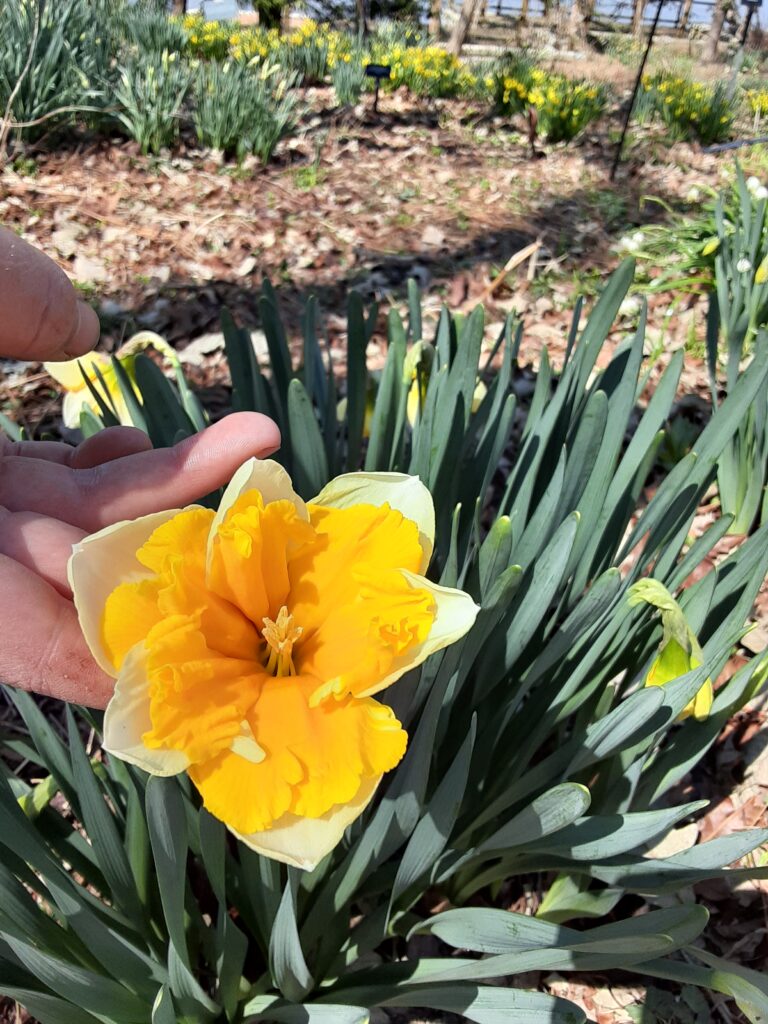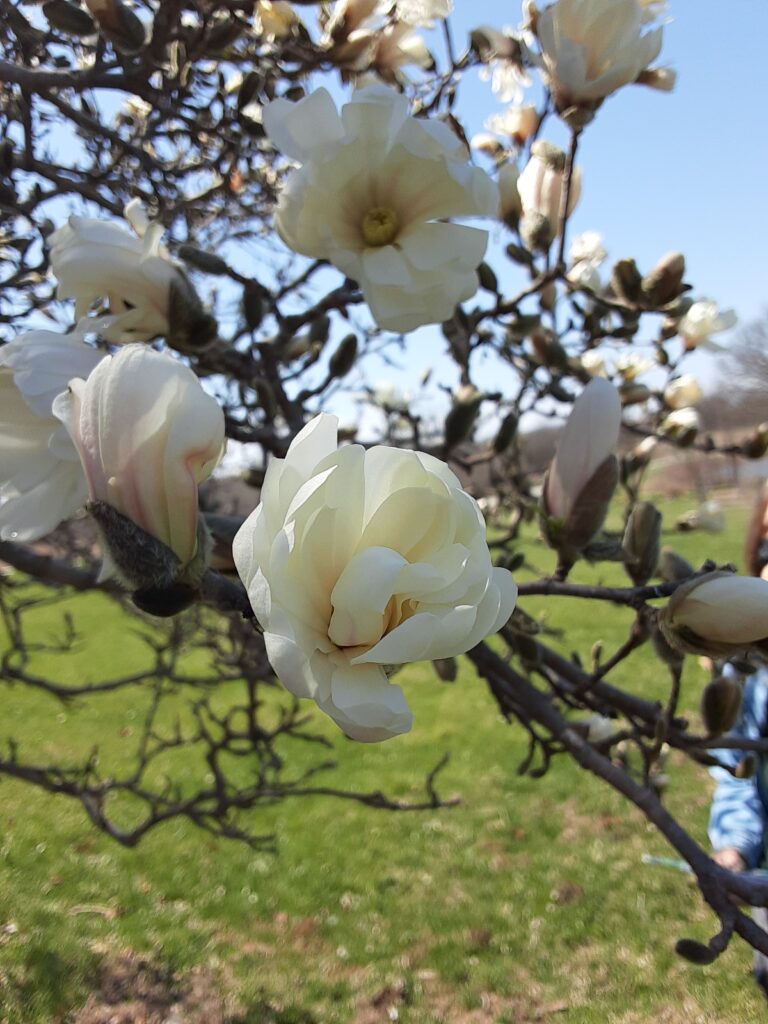Mid-August is a tricky time for gardens. The heat-scorched ground, baked grass, and shriveled foliage make this a good time to go on vacation: even Monty Don, host of BBC’s Gardener’s World, is off this week on holiday. Nevertheless, despite the harsh conditions, August is a time of abundance for many gardeners, especially ones who planted zucchini. For others, the faded flowers and dry, brown stems are discouraging reminders of time passing. Hatch chiles are already on sale at Price Chopper. School starts next week. Winter is just ahead.
Lots of summer still remains before the first frost arrives near the end of October—seventy-or-so days away. How can we make the most of the remaining time? I drove around looking to see what looks good now, and here’s what I found.
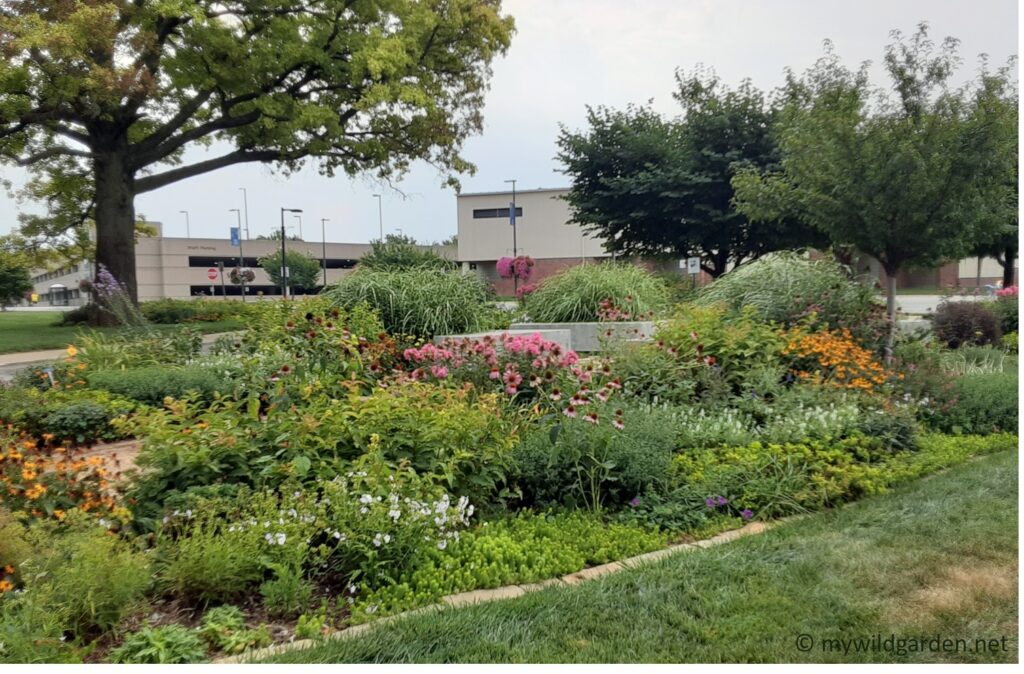
Prairie plants: rudbeckia, milkweed, asters, etc.
The rudbeckia is blazing, the milkweed is alive with bees, asters are starting to unfurl. In fact, my wild garden is at its Monarch-supporting peak—which is great if you like the look of an unmowed vacant lot. I don’t particularly. But having some things bloom at this time of year, when we’re always home, was part of why we went for natives in the first place.
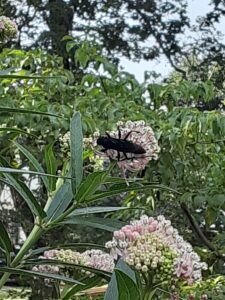
The butterfly and bee activity has picked up, I’m happy to report. I worried Monarch numbers had dwindled this year—because of that April freeze, or perhaps because my neighbors sprayed for mosquitoes. It’s true, overall numbers have fallen dramatically, but these days I can count on seeing a couple fluttering around whenever I glance outside. That makes the garden’s shagginess worthwhile, almost. But I’d like to keep the same amount of habitat, just have it be more shapely.
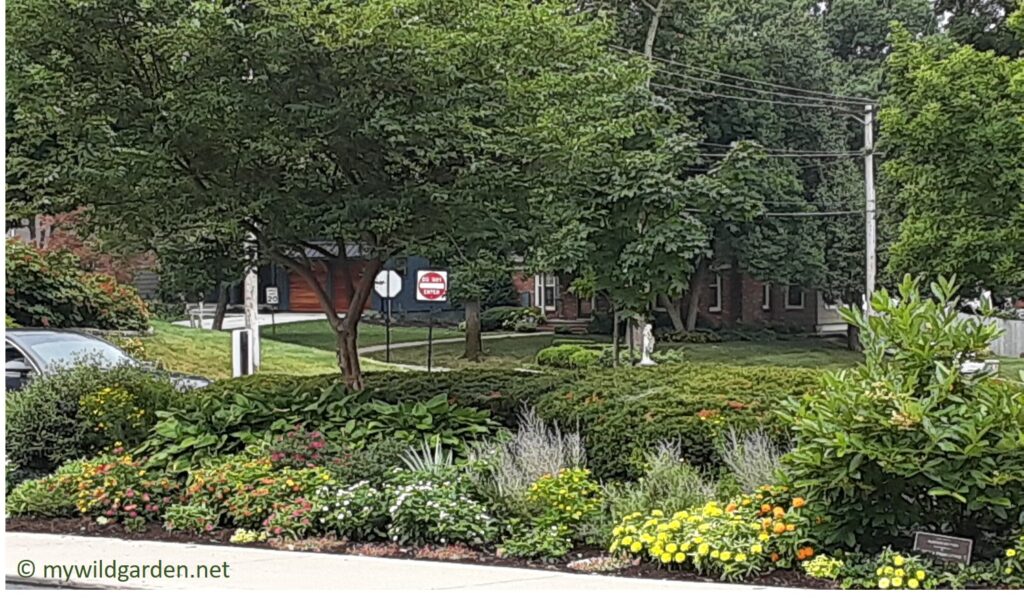
Annuals
You know what looks good this time of year? Annuals. This bed in front of St. Agnes is more my taste—less unkempt and wild. Perennials Russian Sage and Coreopsis mix with mounds of marigolds, zinnias, and lantana; Mexican heather; some low succulent; and even a hosta.
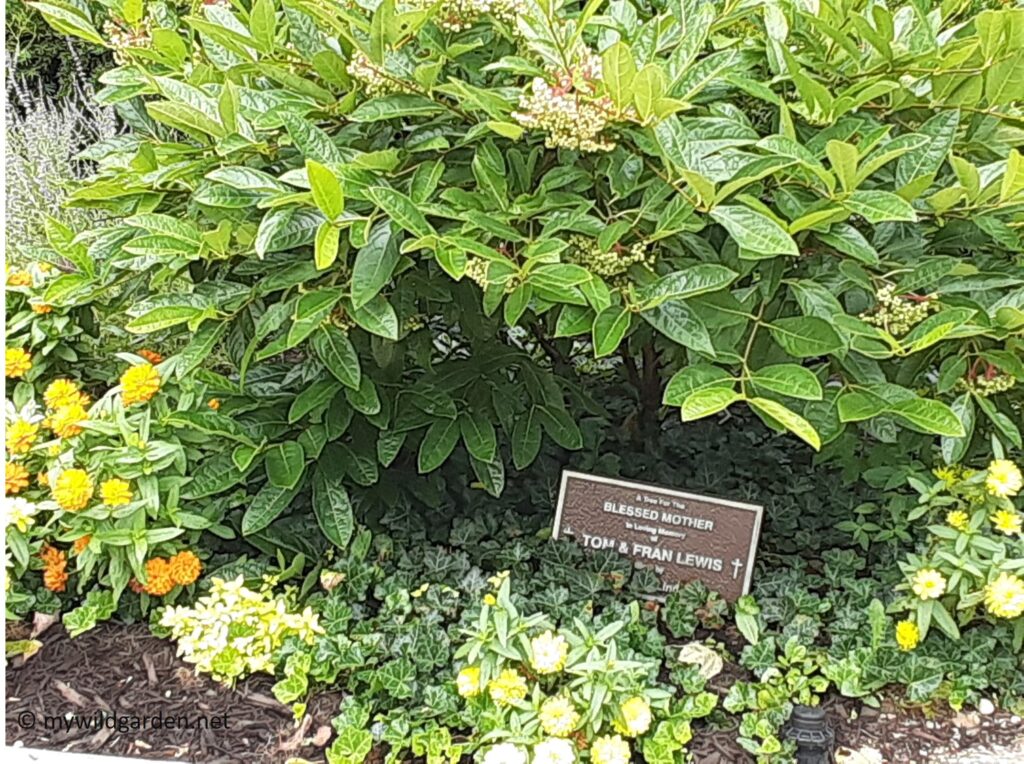
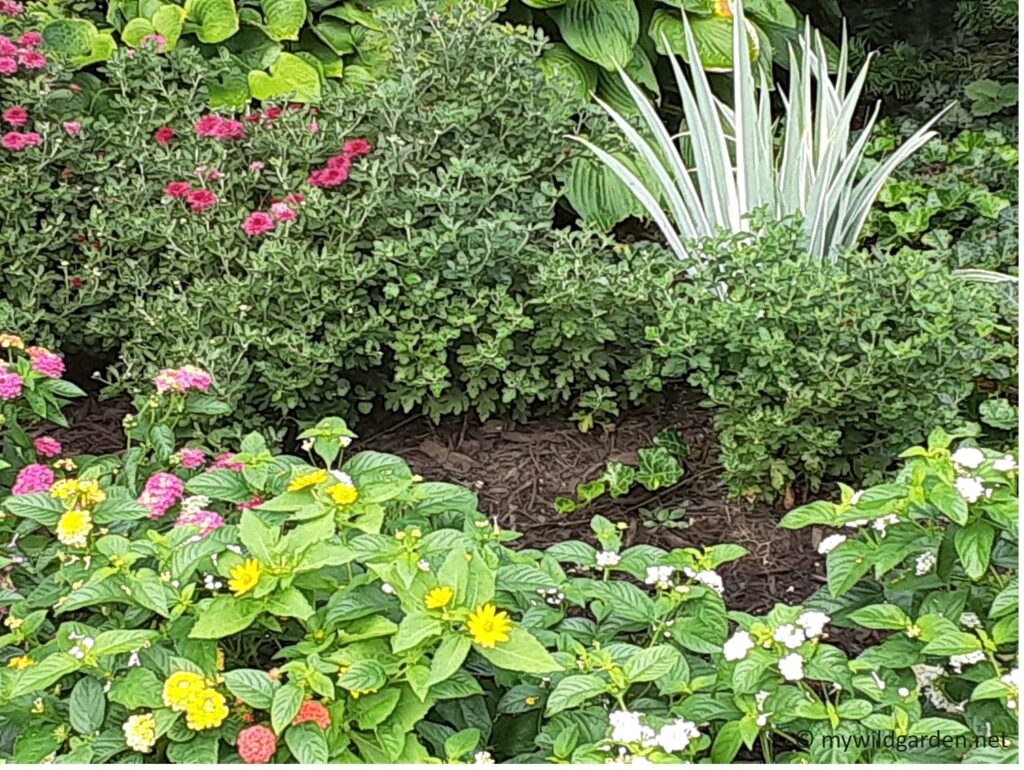
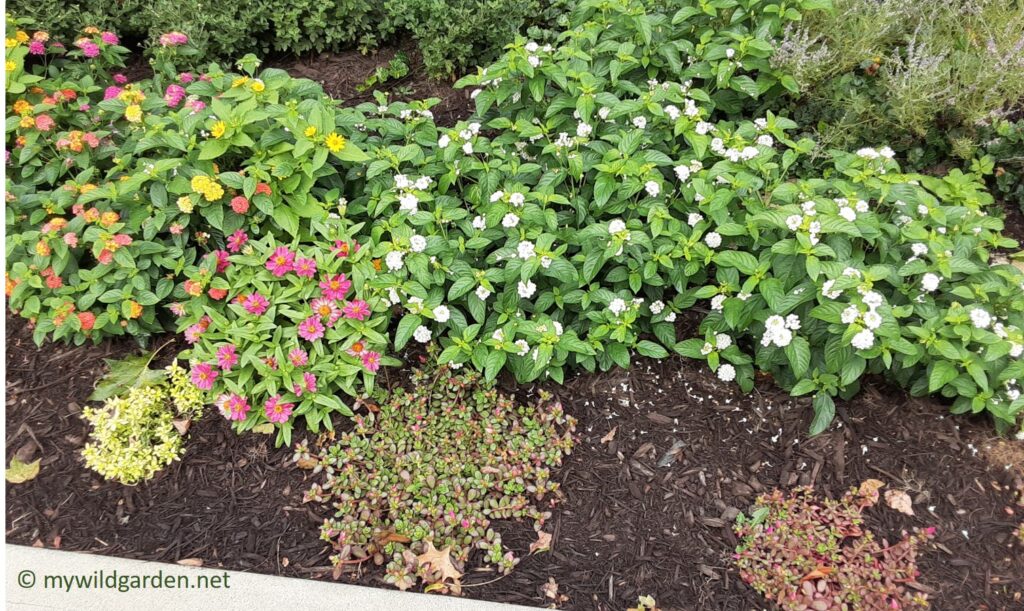
The spiky thing is variegated iris.
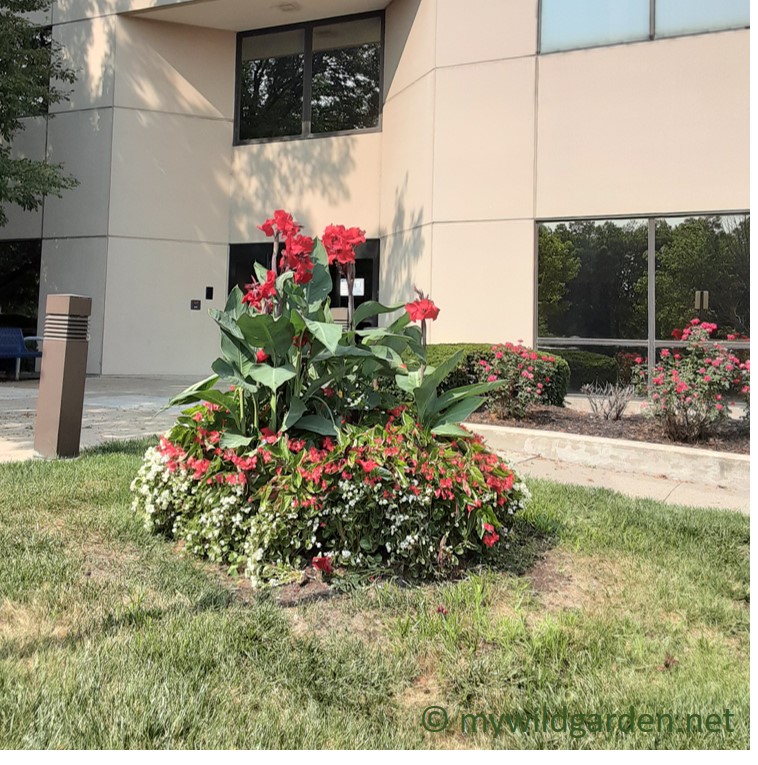
Look at these cannas, seen from the window of a doctor’s office in Overland Park. I don’t know what the idea is here with them rising from the bed of begonias, but these plants must be tough to flourish beside the hot concrete. They don’t do much for pollinators, however.
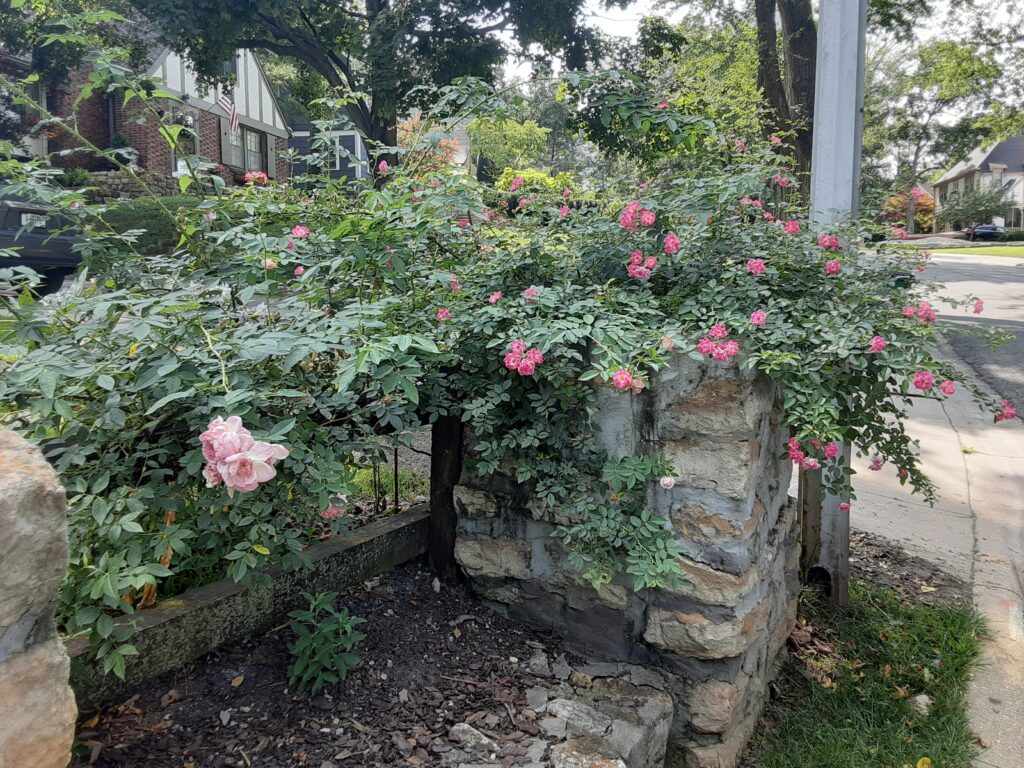
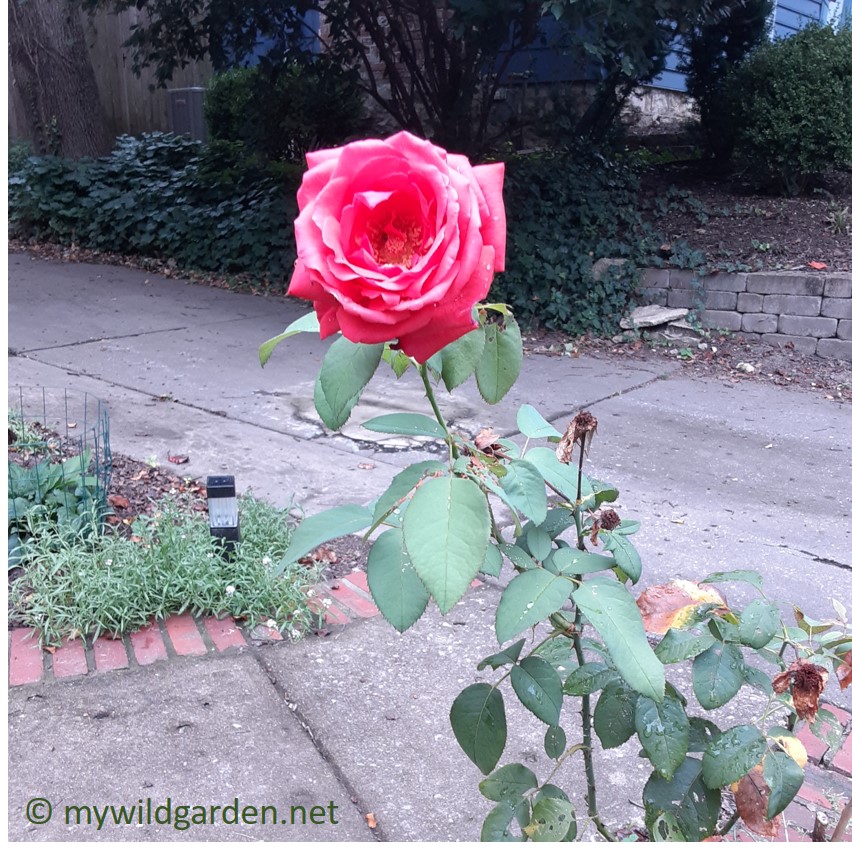
Roses
Some roses are blooming now, like these charming climbers, and this coral one on its second flowering. I believe it’s a hybrid tea. It came with the house.
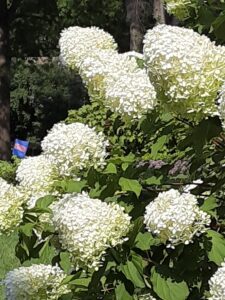
Hydrangeas
Hydrangeas are having an amazing year. So many types are flowering. Some bees love, like the oak-leaf hydrangea towering over my back fence. Others are sterile as, I suspect, are the Annabelles (Hydrangea arborescens) in our yard. I’m not too excited about them but learned last fall how easy they are to divide—so easy even I managed to do it. Now we have three. I don’t like where they are, though, so they’re on my to-move list.
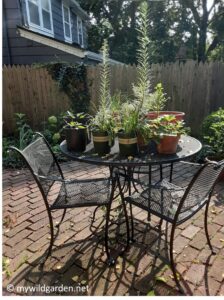
That list is growing long. In the meantime, enjoy these days while you can—”Summer’s lease has all too short a date.” Stay safe and thanks for reading.
